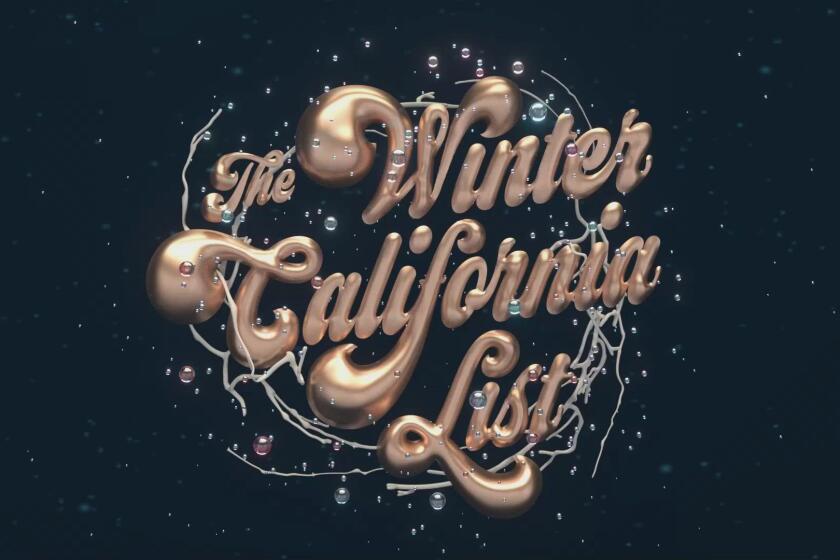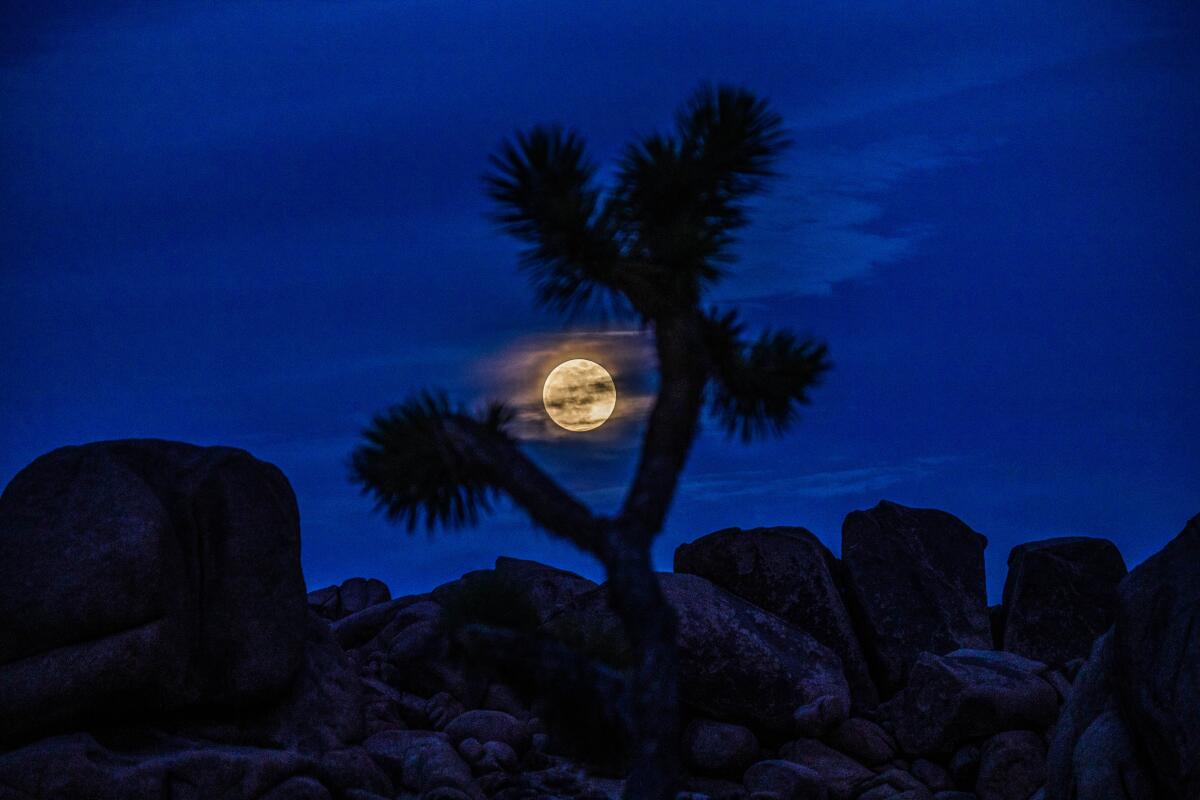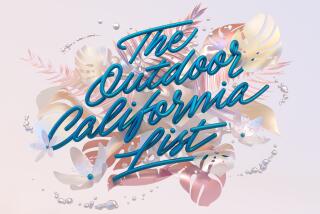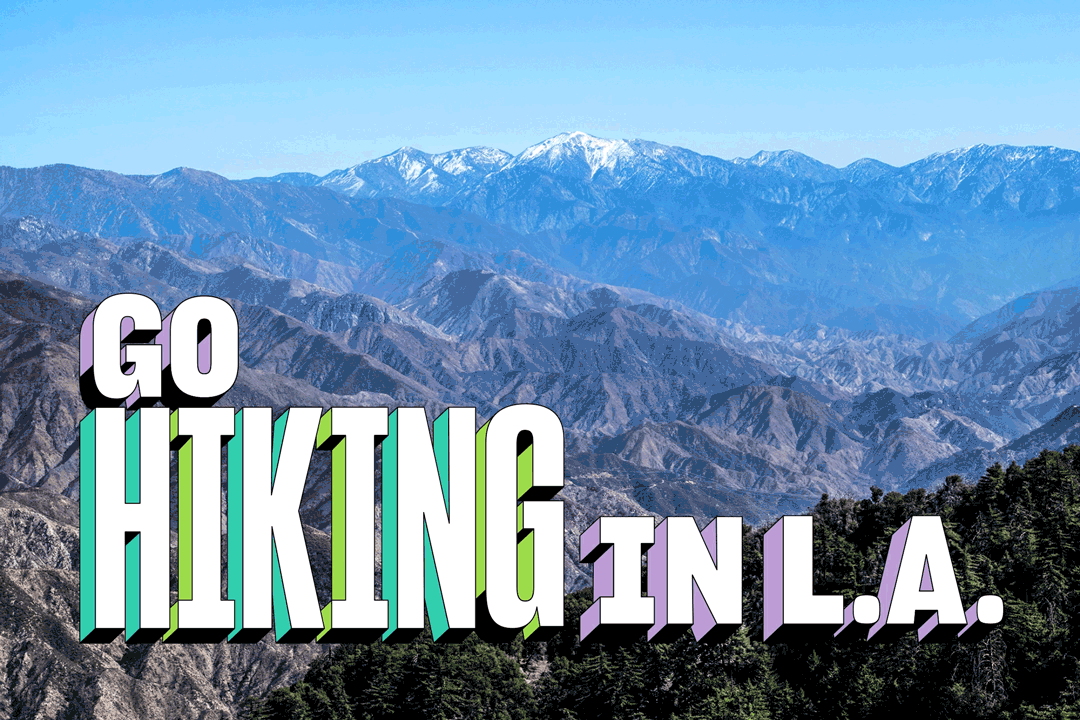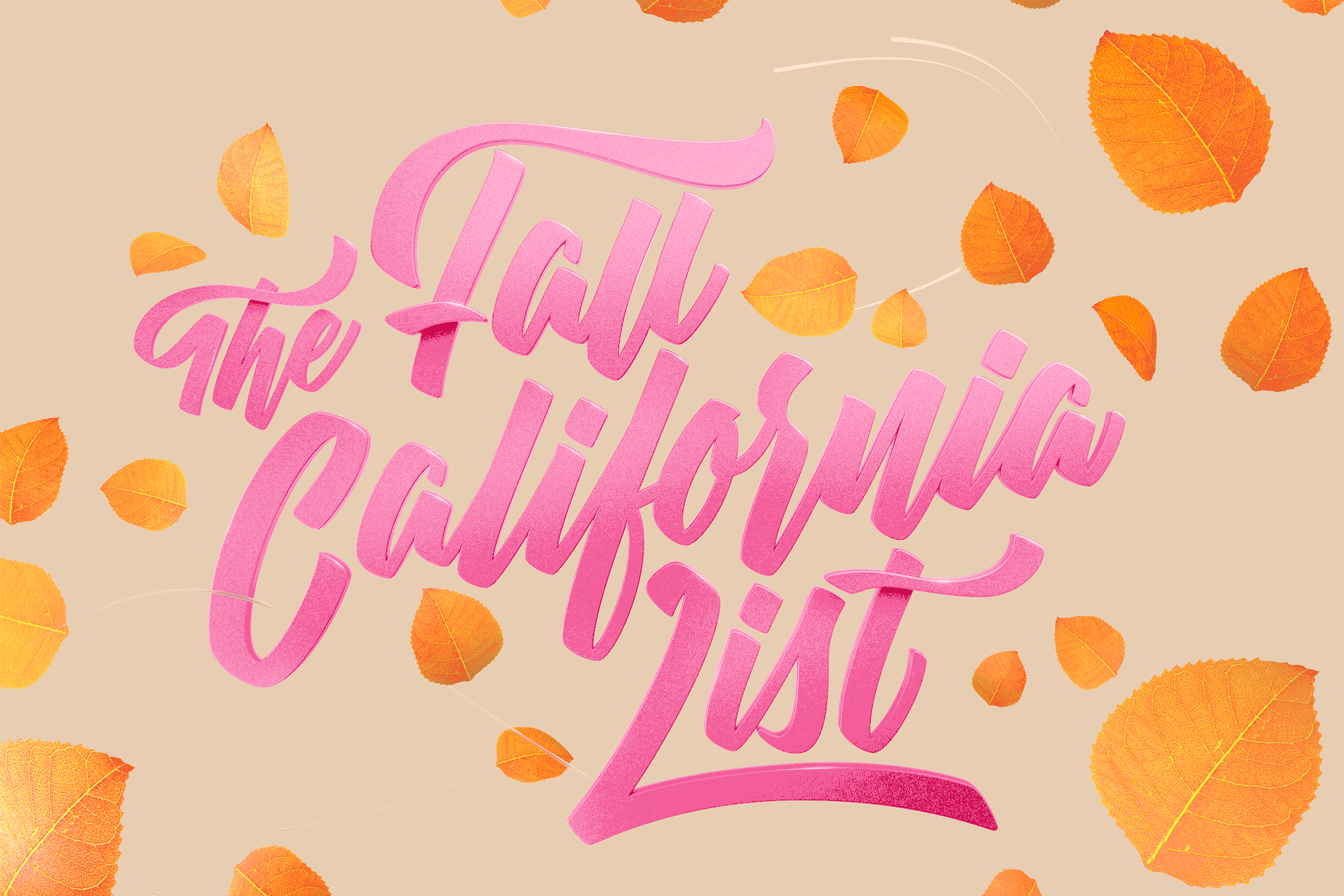
The 40 best California experiences: Fall edition
- Share via
Well, that wasn’t much of a summer. And fall is a wild card. But there is this consolation: Despite the lingering pandemic and fires, dozens of California’s most comforting, energizing and thought-provoking destinations have reopened. And the deserts will be cooling soon. Maybe.
I hope my top 40 list of fall destinations will help sustain readers in these uncertain times. I’ve road-tested all of these places, which are listed alphabetically. Each, whether a rusty desert serpent or a lighthouse you reach at low tide, has an extra something that tempts me to return.
We have a mix of indoors and outdoors spots, but before heading out, check websites or call for an update on hours, occupancy limits, and vaccination and mask requirements.
If I’ve missed a great place for fall, please tell me where to go @mrcsreynolds (Twitter or Instagram), [email protected] or tell us here. Sometimes the conversation is the best part of these things.
Subscribers get early access to this story
We’re offering L.A. Times subscribers first access to our best journalism. Thank you for your support.
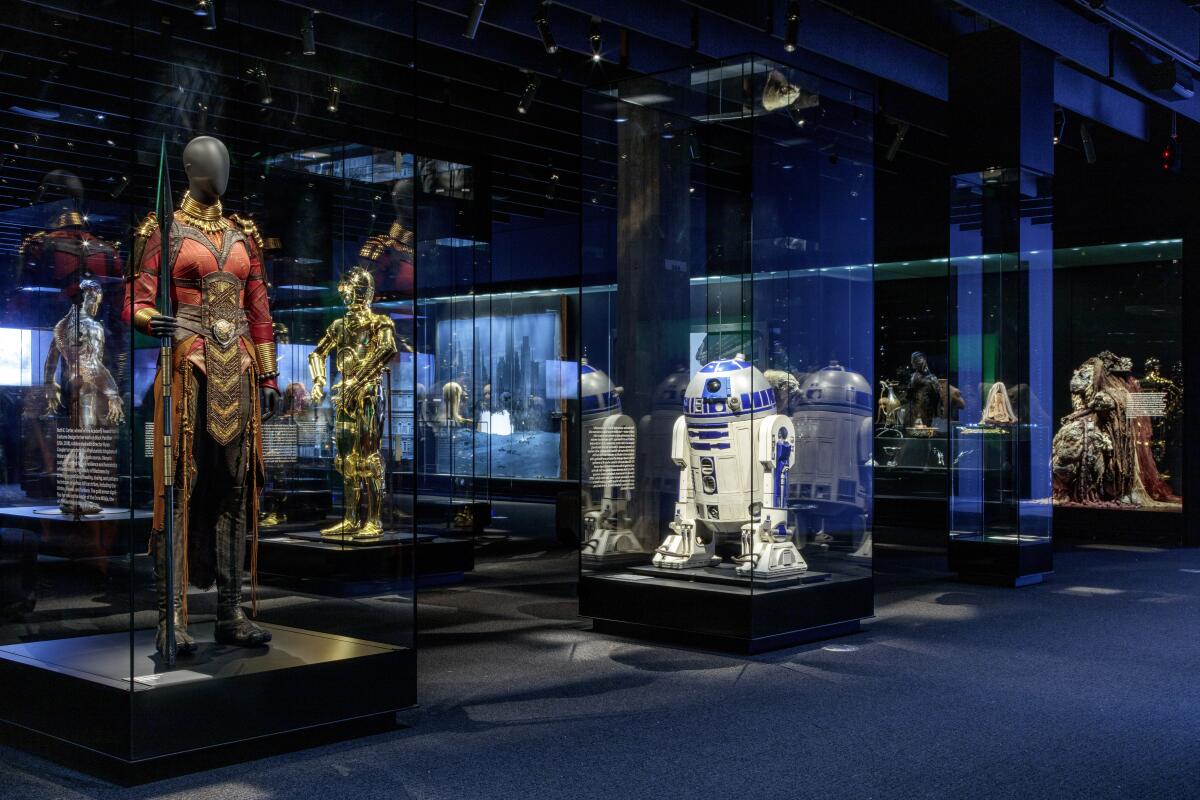
Academy Museum of Motion Pictures
L.A’s newest and most highly anticipated (and debated) museum is a deep dive into everything cinematic. If you want a closer look at Hollywood (the industry, not the neighborhood), this is now the place to come. Just the architecture of the museum, which adjoins a signature domed theater designed by Renzo Piano, is worth a look, but you can get lost in all the behind-the-scenes exhibits such as “The Art of Moviemaking,” which breaks down the elements of MGM’s 1939 classic “The Wizard of Oz,” from interoffice memos to Dorothy’s ruby slippers. You can find all kinds of artifacts, including Gregory Peck’s script for “To Kill a Mockingbird” covered with his handwritten notes, the blue typewriter Joseph Stefano used to write the script for Alfred Hitchcock’s 1960 horror classic “Psycho,” Okoye’s costume from “Black Panther,” “Star Wars’” R2-D2 and C-3PO, and the original E.T. You can also get face to face with the toothy Xenomorph monster from “Alien.” (Check out The Times’ museum opening coverage.)
In the museum, there’s a cafe for dining. And if all that’s not enough, pay $15 to experience what it feels like to hear your name announced for an Oscar and walk up to the stage to accept it in “The Oscars Experience.”
The museum is open daily from 10 a.m. to 6 p.m. Sunday-Thursday and from 10 a.m. to 8 p.m. Friday-Saturday. Admission by timed reservation is $25 for adults or $19 for seniors 62 and older; $15 for college students; and free for members and children 17 and younger. The Oscars Experience is $15 and only available with a general admission ticket.
Pro tip: The Los Angeles County Museum of Art, next door on Wilshire Boulevard, is half-open as work continues on its new main building, due to fully reopen in 2024.
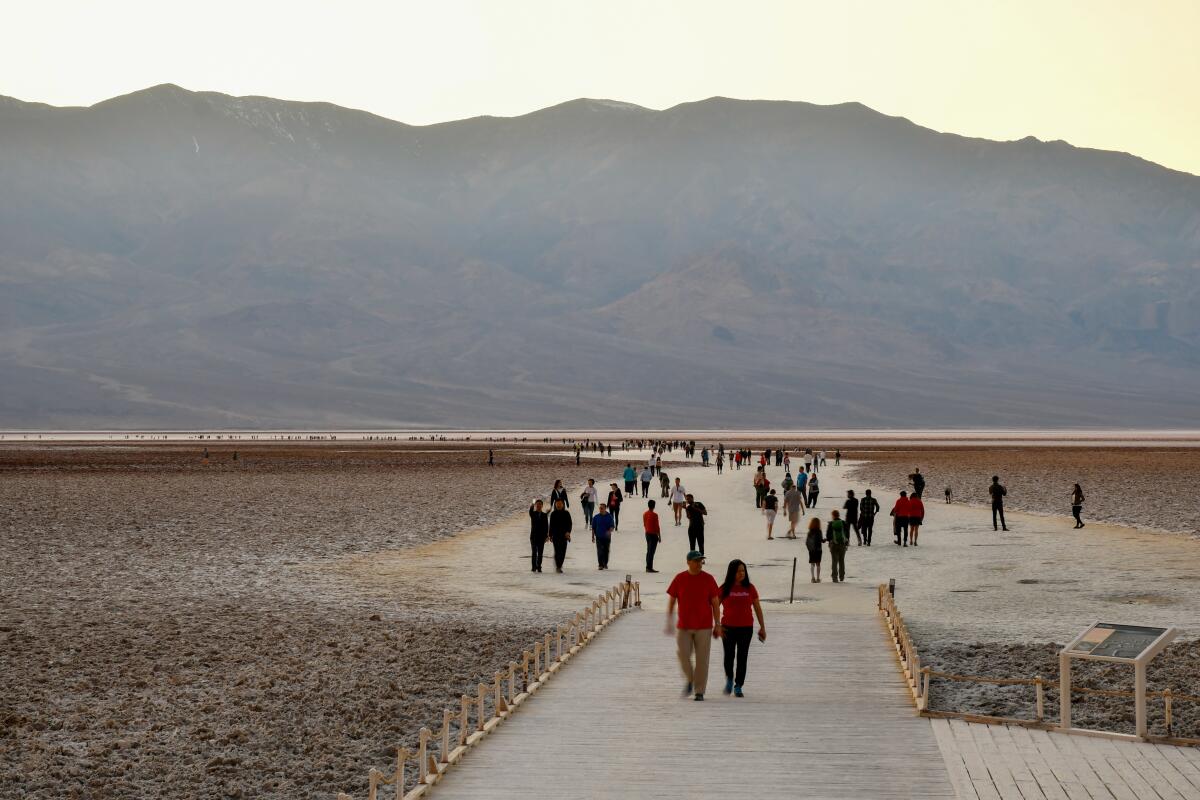
Badwater Basin, Death Valley National Park
Pro tip: If you’d rather rattle your bones on a rugged road, take a four-wheel-drive vehicle on the 26-mile journey to the Racetrack, a dry lake bed where wind and low temperatures scoot rocks across the vast, white plain.
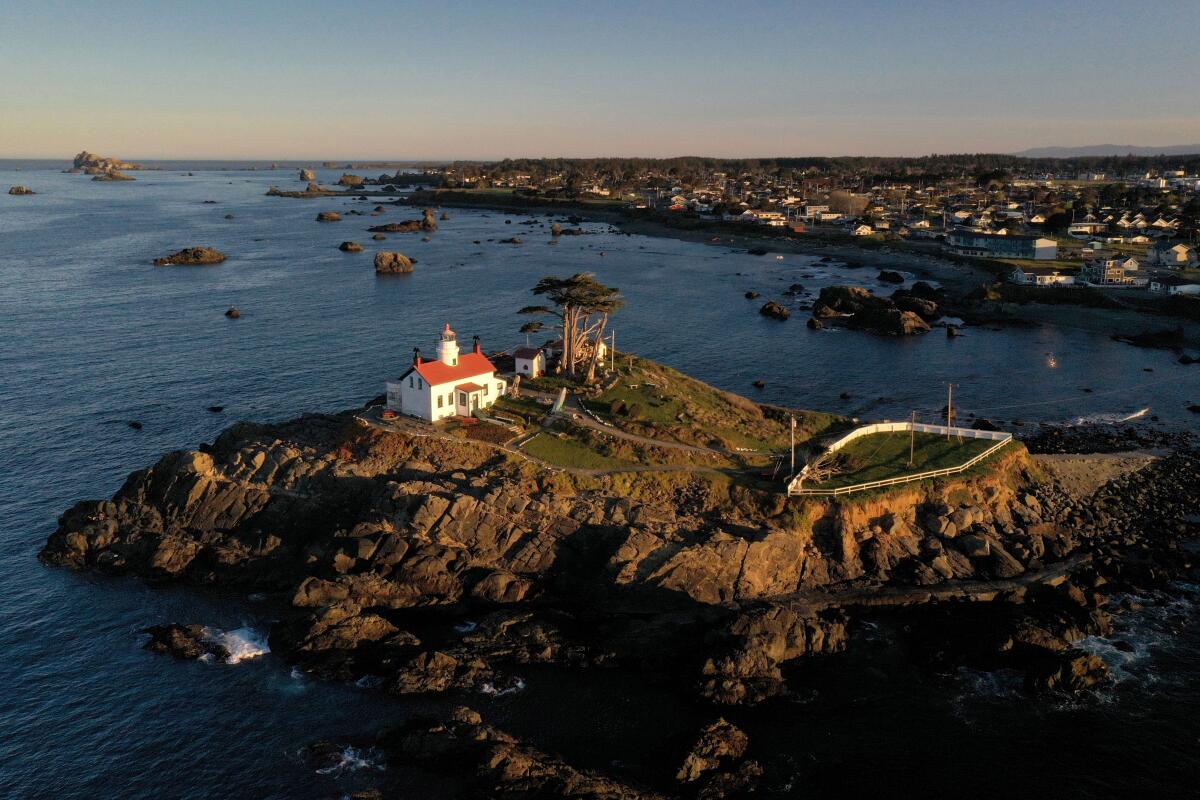
Battery Point Lighthouse
Pro tip: More lighthouse favorites are in Marin County: Point Reyes, where you climb down 313 steps (and then climb back up) while lashed by wicked winds, and Point Bonita, where the half-mile hike to the lighthouse includes a tunnel and a bridge above the surf smashing on black-rock headlands.
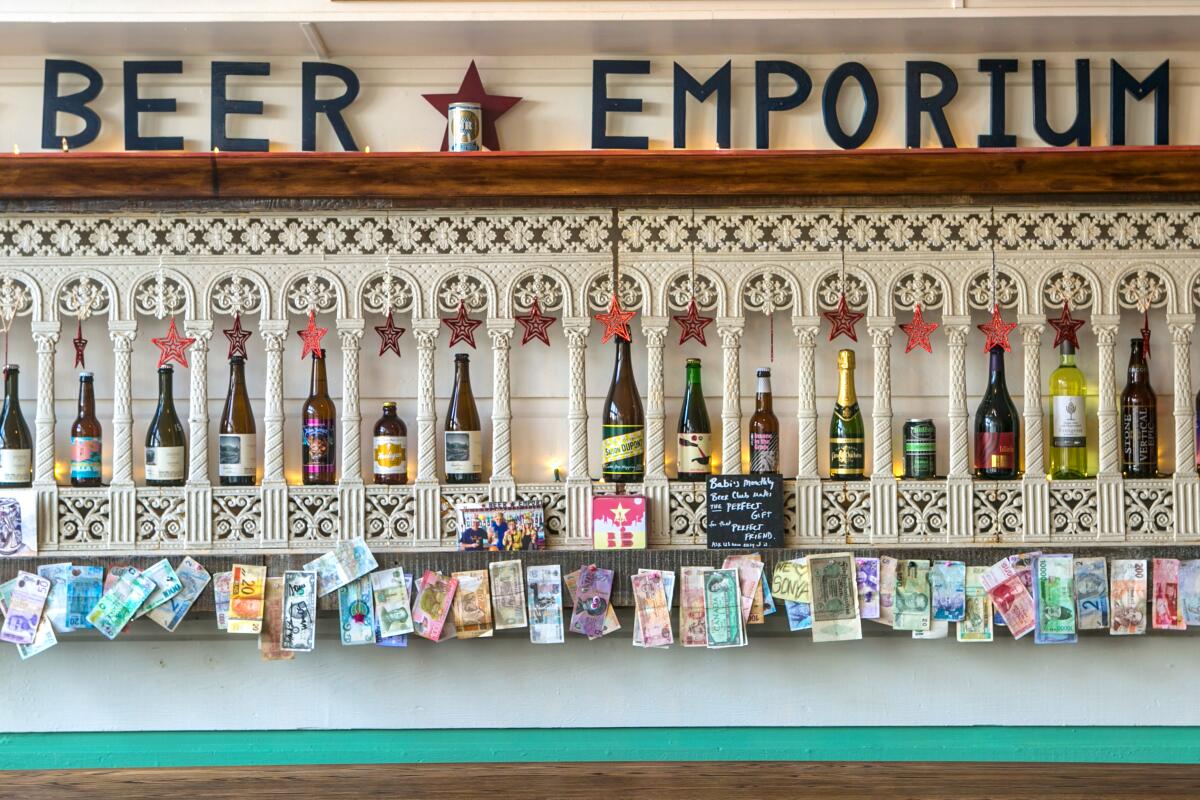
Bell Street, Los Alamos
Bell Street, the town’s main drag, has an Old West feel, several stylish restaurants, a handful of tasting rooms and a few antique shops. Bob’s Well Bread Bakery and Plenty on Bell are popular for breakfast and lunch; Full of Life Flatbread does big dinner business. The menu at Pico includes lamb tartare and uni tostadas. The Maker’s Son restaurant and event space began life in the 1920s as a garage and gas station.
You could stay at a trendy motel (Alamo Motel) or a Victorian bed-and-breakfast with elaborately themed rooms (Victorian Mansion). If you’re splurging, the Skyview Los Alamos may be the answer.
Pro tip: Several restaurants in town also rent cottages through Airbnb, including Bob’s Well Bread Bakery, Bodega and Pico.
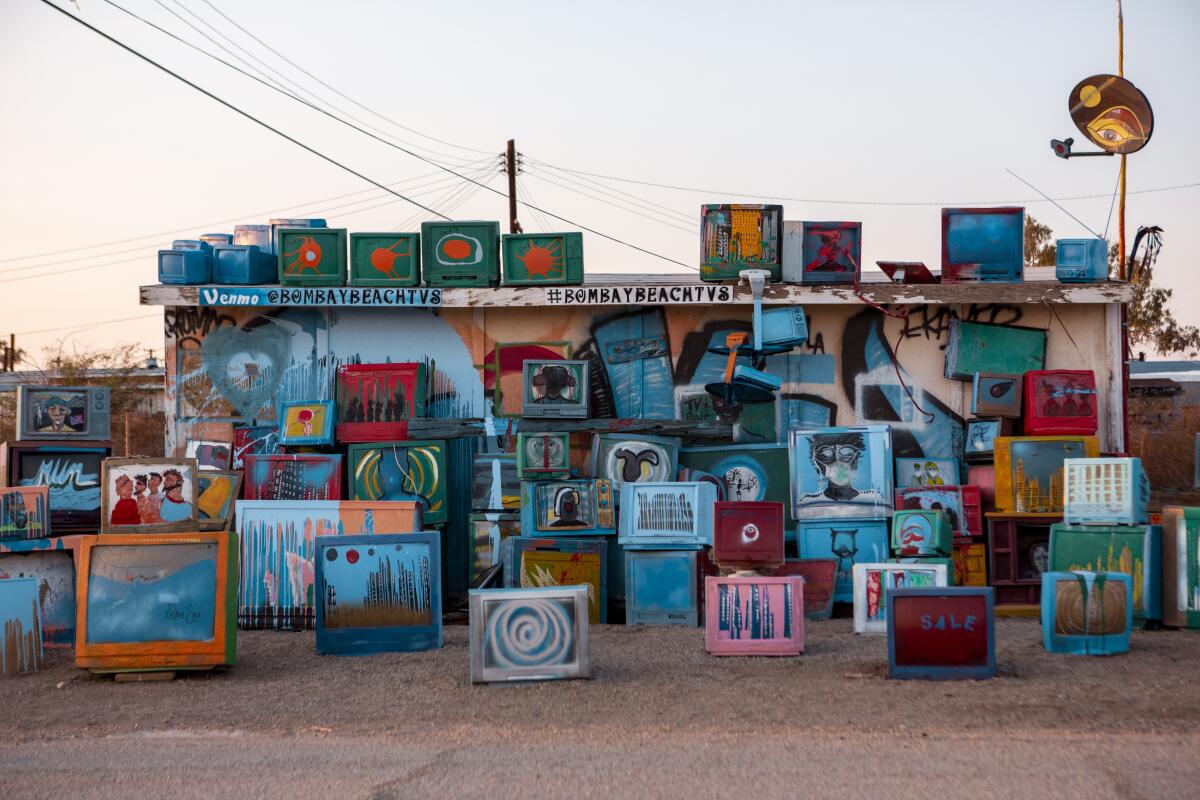
Bombay Beach
This was a mainstream vacation destination 70 years ago, when the sea was healthier. Now it’s a grid of 32 square blocks with perhaps 300 residents. It has a single bar/restaurant, the Ski Inn, a market and about a dozen Airbnb units, but not everyone will want to spend the night. It’s edgy.
Migrating birds love Bombay. As do some frugal retirees. And lately, so do a gaggle of artists: Don’t miss the plane standing on its nose (“Lodestar” by Randy Polumbo) at 1st and H or the painted televisions at 4th and H. Near sunset, cross the 5-foot berm between the community and the seashore (5th and E). From there you can behold assorted sculptures and installations, baking and crumbling amid the miles of gritty sand, salty water and empty sky. Drive through town again once the sun is down, because several installations are lighted after dark.
Pro tip: The evening I showed up, the Bombay Market had just closed (6 p.m.) and the Ski Inn was locked. In Bombay Beach, there are no givens.

Borrego Springs
Pro tip: Anza-Borrego Desert State Park, California’s largest, surrounds Borrego Springs. Its Palm Canyon hike, a 3.25-mile loop, has been a favorite for decades.
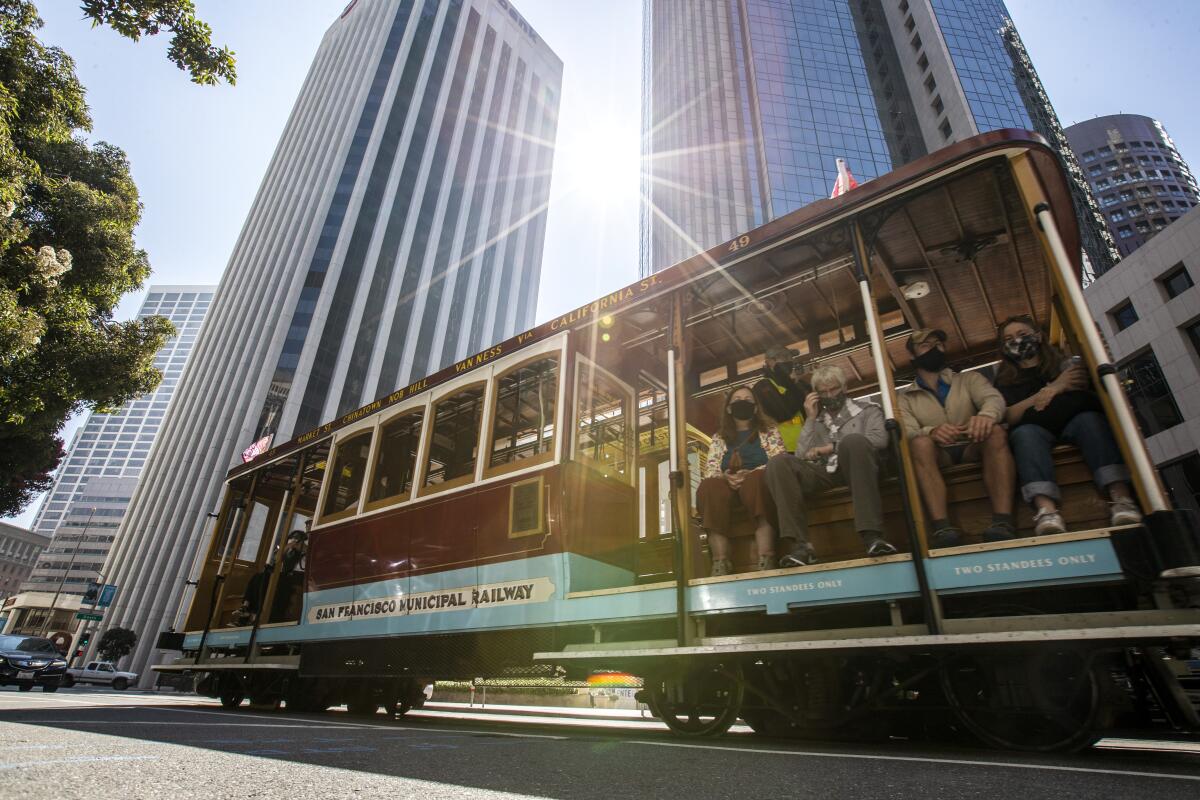
Cable Cars
On arrival, grab an Irish coffee at the Buena Vista or stroll two blocks to Ghirardelli Square. It has chocolate. Fare is $8 one way (in advance) or $13 for a one-day Muni Visitor Passport through the MuniMobile app. (For a mellower ride with more locals, try the California Street line.)
Pro tip: For maximum thrills, stand on the running board at the pole position on the right front of the car. Unless you give that spot to a bright-eyed kid.
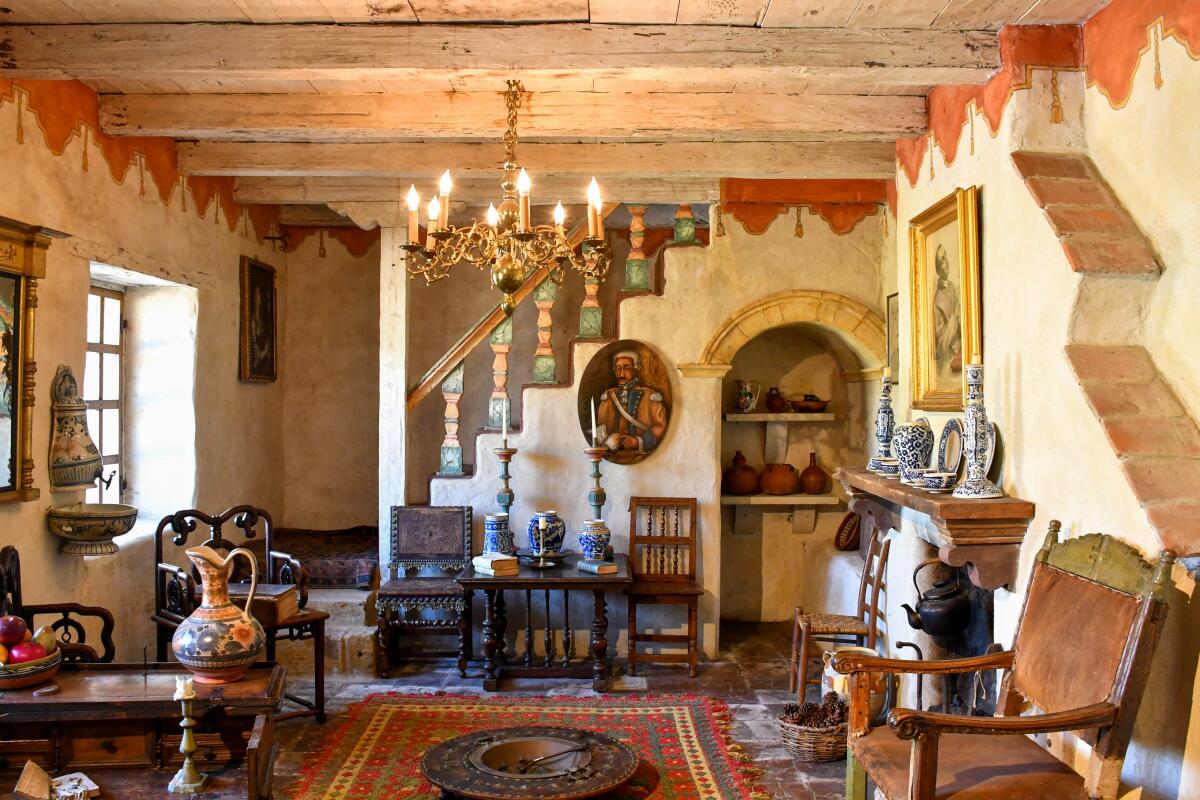
Carmel Mission
Pro tip: The first mission (founded 1769) still functions in San Diego; the last (1823) is part of a state historic park in Sonoma. The most-visited one might be Orange County’s Mission San Juan Capistrano, which has ruins, gardens and its own Amtrak stop.
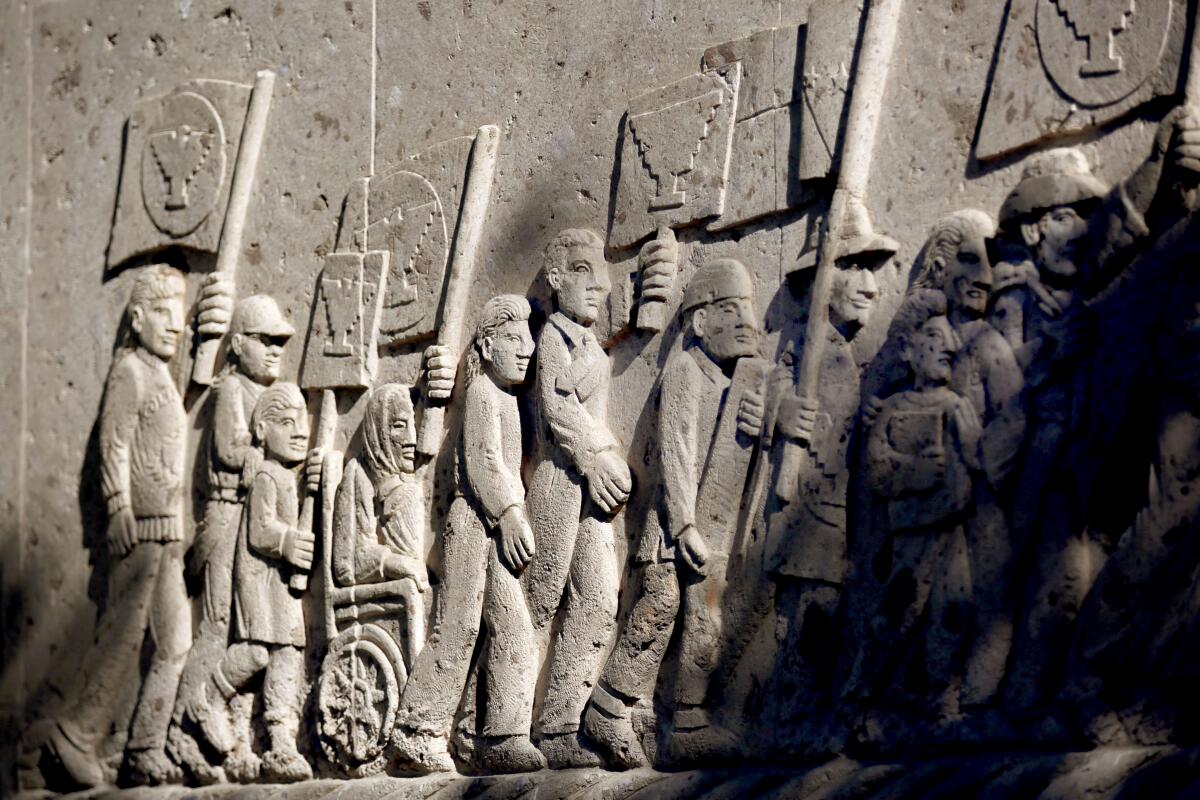
César E. Chávez National Monument
Chávez, who was born in Yuma, Ariz., might be the most influential labor leader in California history. The visitor center includes biographical videos, a re-creation of his office and exhibits detailing the many causes he pursued. Admission is free.
For breakfast or lunch, try the Keene Cafe half a mile west of the monument on Woodford-Tehachapi Road. Or pause in Tehachapi, about 11 miles southeast of the monument, for a stroll and a snack at Kohnen’s Authentic German Bakery.
Pro tip: From a roadside overlook on a hill 3.2 miles east of Keene, you can see the Tehachapi Loop, a 3,800-foot section of railroad track built by Southern Pacific engineers and Chinese immigrant laborers in the 1870s and still used by freight trains. The loop draws rail fans from around the world with its bridges, tunnels and elegant spiral as it climbs at a 2.2% grade. Any train 4,000 feet long will briefly pass over its rear cars in the tunnel 77 feet below.
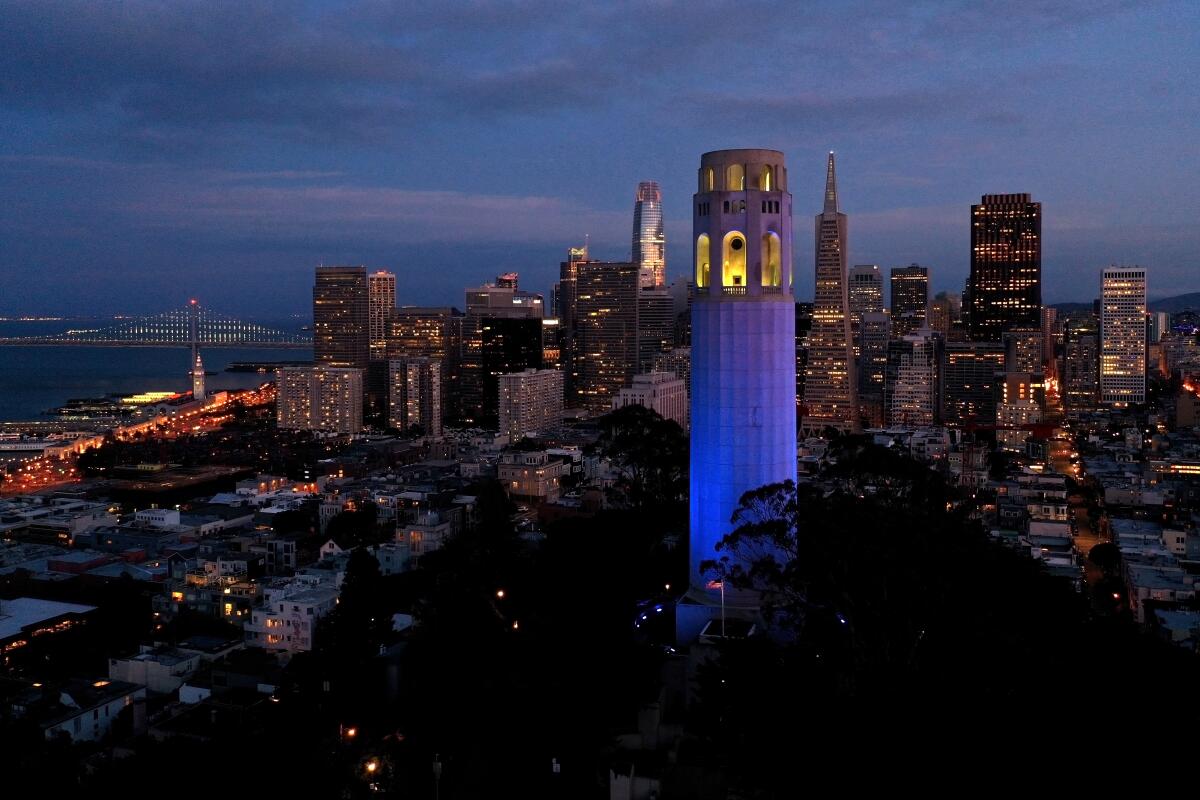
Coit Tower
Pro tip: For a good workout, preface your visit by climbing the Filbert Steps, which start at Levi’s Plaza along the Embarcadero.
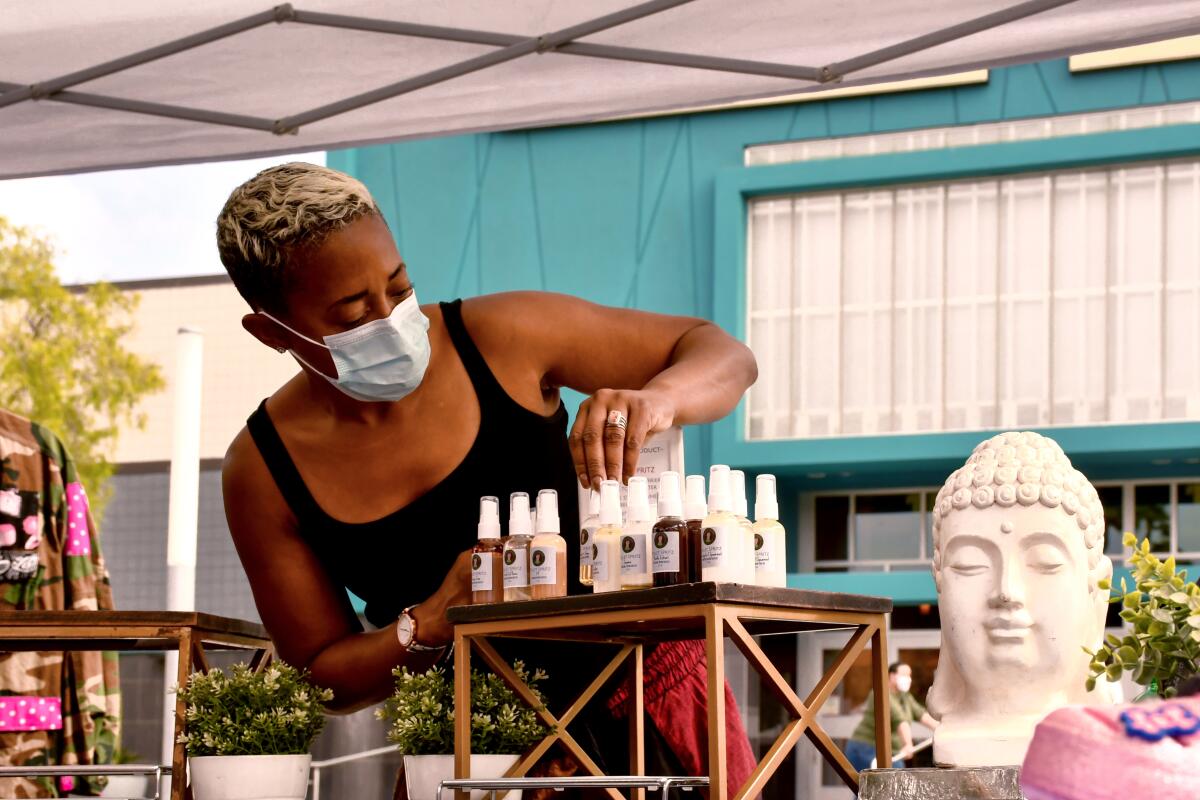
Crenshaw Farmers Market
Pro tip: There’s more to come. Scheduled for completion in fall 2022, the nearby Destination Crenshaw redevelopment project aims to upgrade a 1.3-mile stretch of Crenshaw Boulevard (48th to 60th streets) with pocket parks, new trees, and more than 100 works commissioned from local and far-flung Black artists. The project parallels the 8.5-mile, street-level Crenshaw/LAX Metro rail line, expected to open this year.
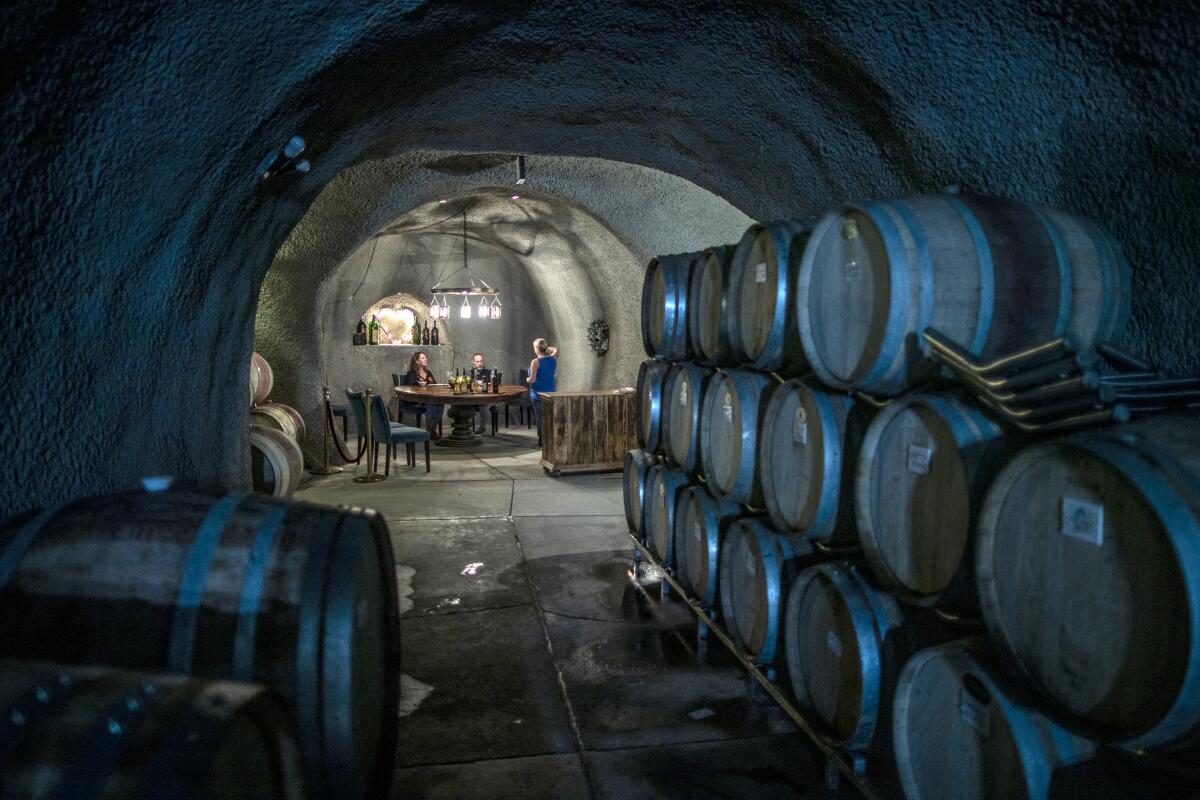
Downtown City Park, Paso Robles
The park hosts events throughout the year, including car shows, Pioneer Day (Oct. 9 this year) and wine festival tastings. This year’s Harvest Wine Weekend is Oct. 15-17. Make tasting reservations ahead (pandemic measures have reduced capacity and spontaneity).
Tin City
Info: pasoroblesdowntown.org
Pro tip: About six blocks north of the park, check out Paso Market Walk, a fledgling food hall. Four miles south, in an industrial zone you’d never encounter by accident, 20-acre Tin City is filled with makers of wine, beer, spirits and other consumable delights, including, Barrelhouse Brewing Co. and the Etto Pastificio pasta factory.
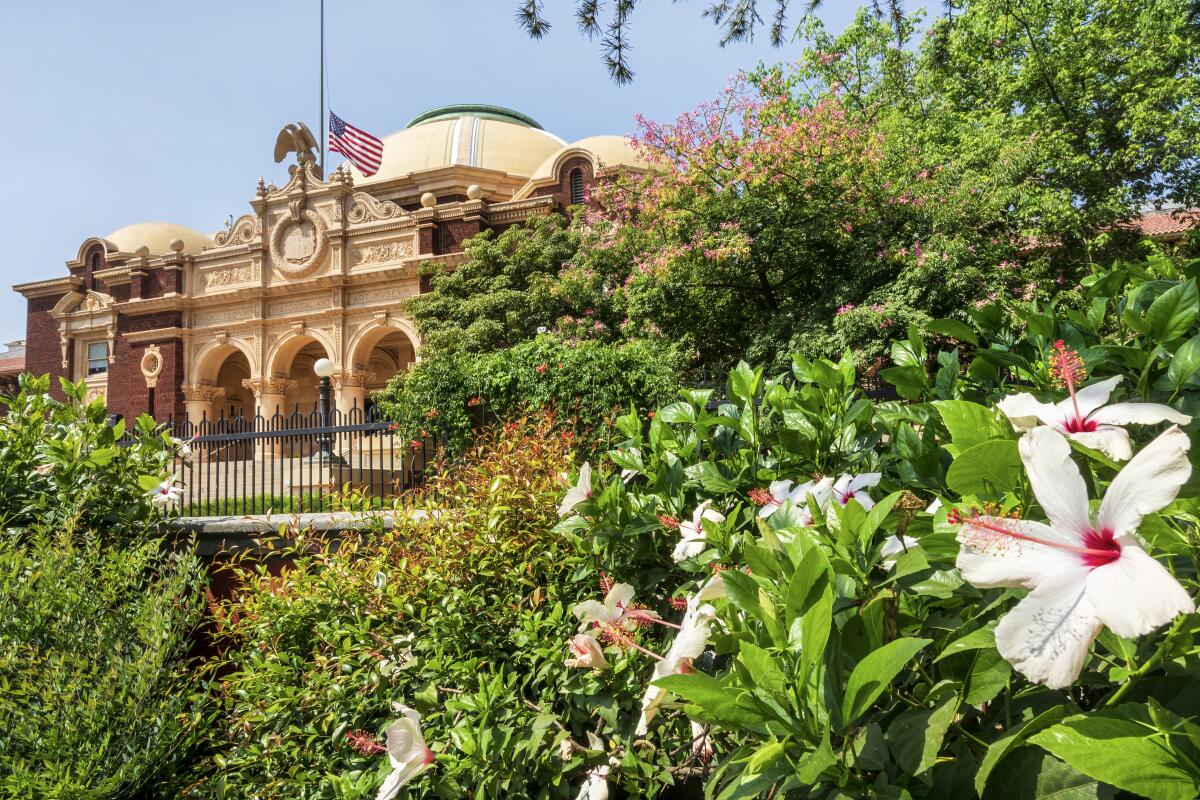
Exposition Park
Pro tip: More than 300 Kobe Bryant murals have sprung up throughout Southern California since the 2020 helicopter crash that killed him and his daughter Gianna. Check out this mural map and you’ll find that Exposition Park is surrounded by them.

Getty Center
Take the tram up the hill and head for the West Pavilion, which houses photography and Impressionists. Also check out the cactus garden that seems to float in the sky. Closed Mondays.
Pro tip: If antiquities boost your pulse, spend a day at the Getty Villa in Pacific Palisades, which specializes in ancient Greek, Roman and Etruscan art. Closed Tuesdays.
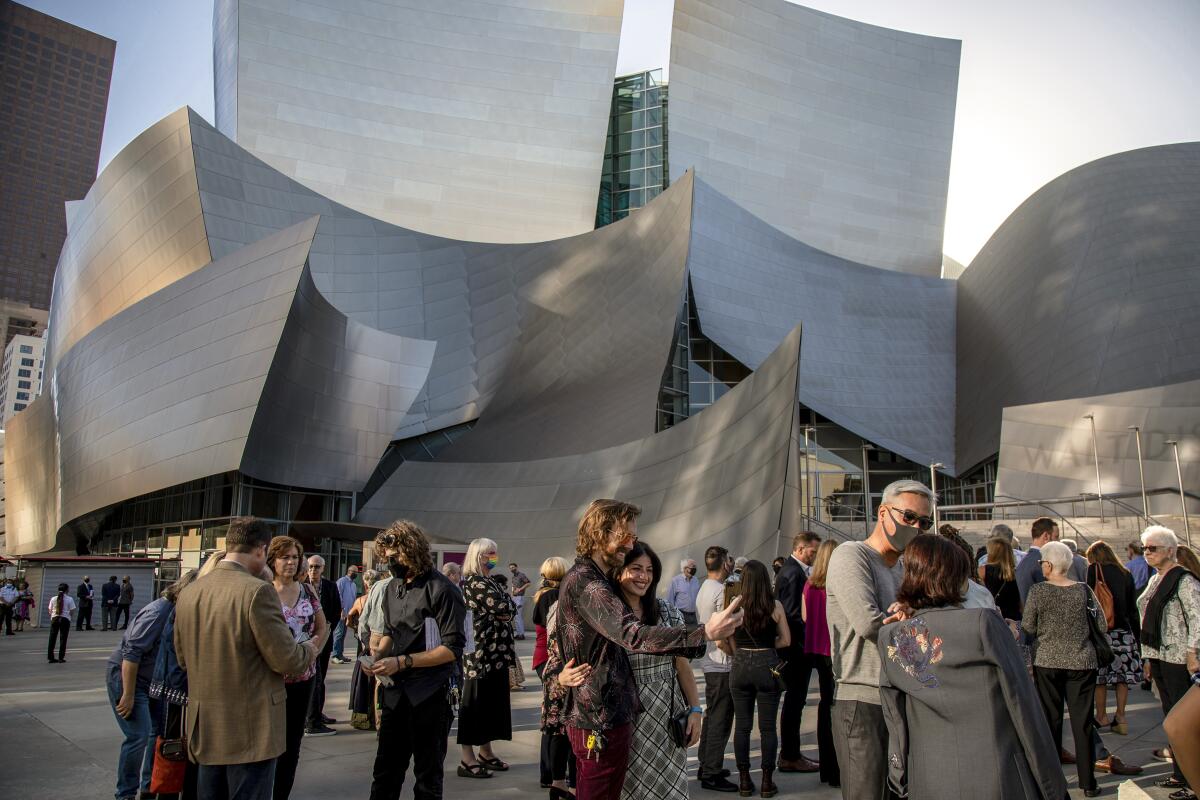
Grand Avenue
Other arts organizations are close at hand, including the Music Center and Center Theatre Group, the Museum of Contemporary Art and the Colburn School (a performing arts school). Across the street from Disney Hall, a pair of mixed-used skyscrapers are rising and are expected to bring more foot traffic with a hotel, apartments, retail and restaurants opening in 2022.
Pro tip: Recharge at Grand Park, a 12-acre green space that flows down Bunker Hill with a fountain near the top and City Hall at the bottom. For Día de los Muertos, the park is partnering with Self Help Graphics and artist Ofelia Esparza to present altars and activities Oct. 22- Nov. 2.
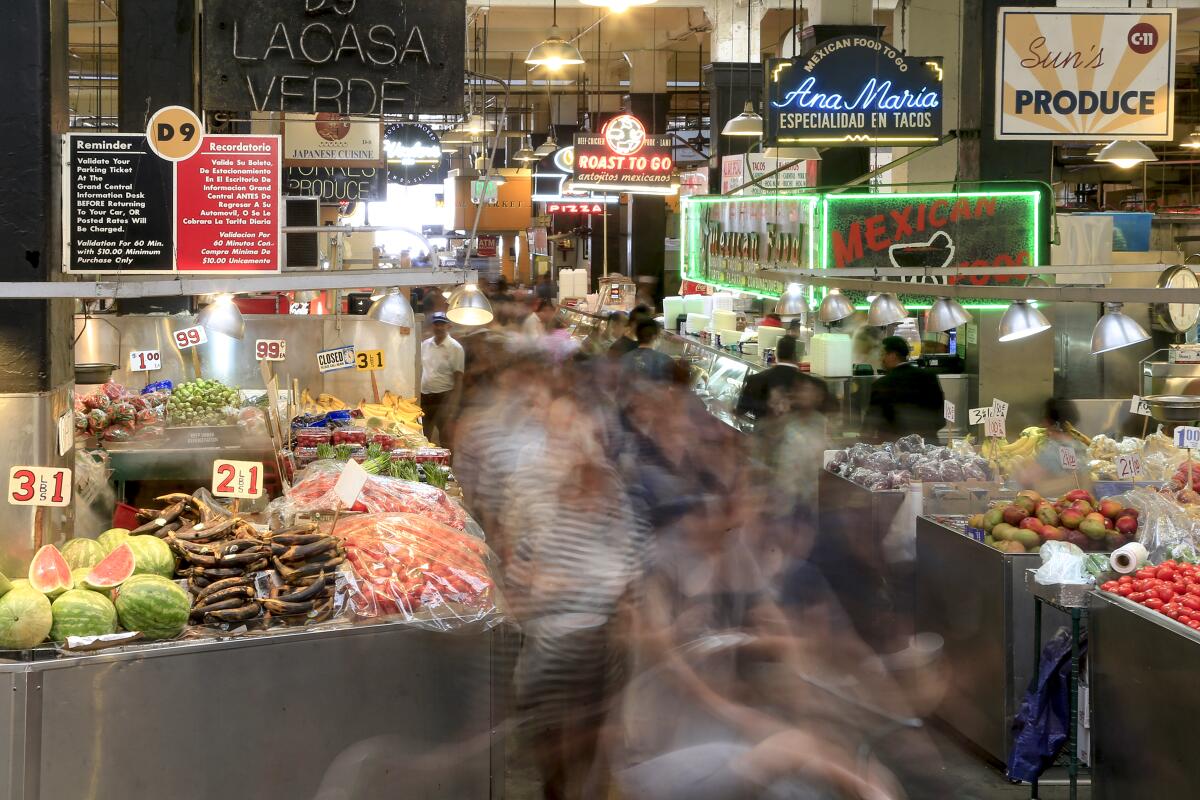
Grand Central Market
Pro tip: Across Hill Street, you’ll find the Angels Flight Railway, a funicular that dates to 1901. Its two orange cars charge $1 for a short, steep ride (298 feet) to California Plaza atop Bunker Hill.
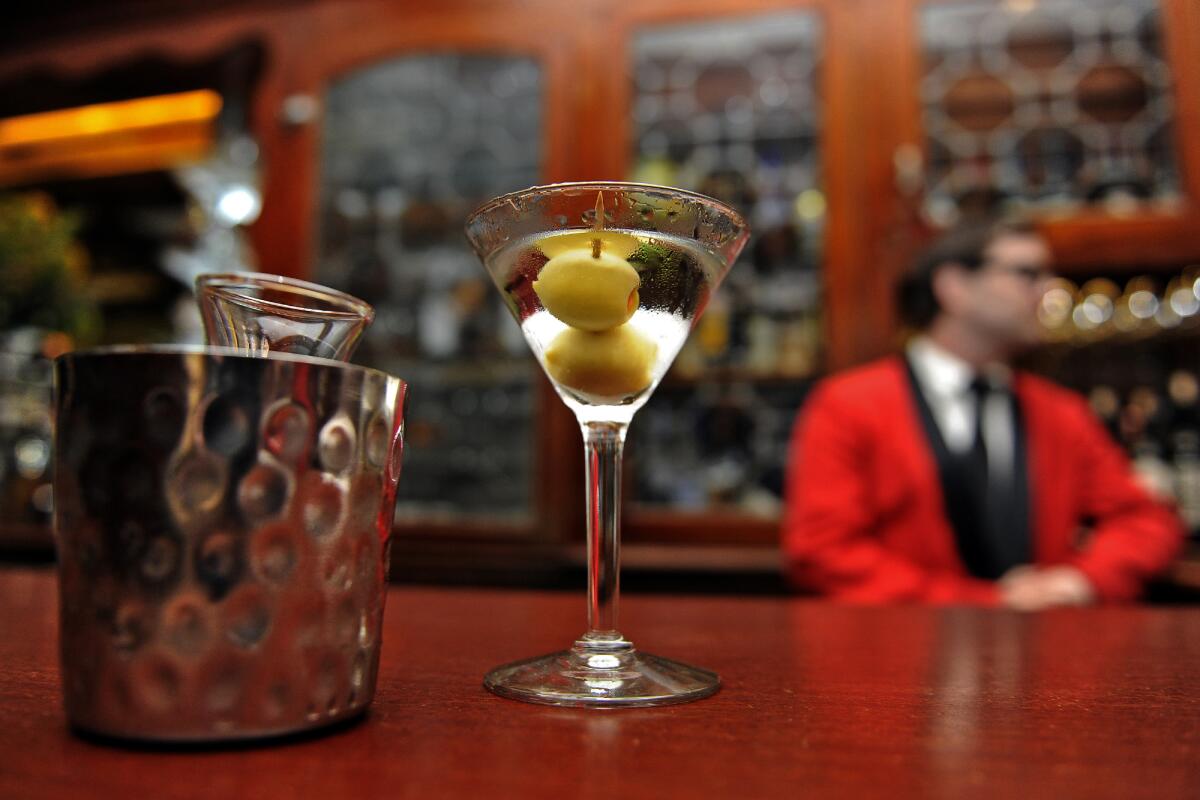
Hollywood Boulevard
Grownup explorers might want to start a quarter-mile east of the El Capitan by savoring a steak or cocktail in the atmospheric Musso & Frank Grill (open since 1919), followed by a show in the Art Deco splendor of the Pantages Theater. (“Hamilton” is back through Jan. 2). Take a moment to admire the cool neon sign of the Frolic Room next door.
Pro tip: For a deeper dive into stage and cinema history, step into Larry Edmunds Bookshop (founded 1938) across the street from Musso & Frank. And if you want to strike a blow against misery on the boulevard, local efforts include My Friend’s Place, which serves homeless youths, and the Hollywood Sunset Free Clinic.

Hollywood Forever Cemetery
Mel Blanc, Cecil B. DeMille, Judy Garland, Johnny and Dee Dee Ramone, Rudolph Valentino, Burt Reynolds and many others repose here. So can you, either long-term or on a more temporary basis. Management hosts yoga classes (pay by donation) six mornings per week.
Pro tip: The cemetery’s Day of the Dead celebration — a spectacle for more than 20 years, usually featuring costumed visitors and altars honoring the dead — takes place Oct. 30.
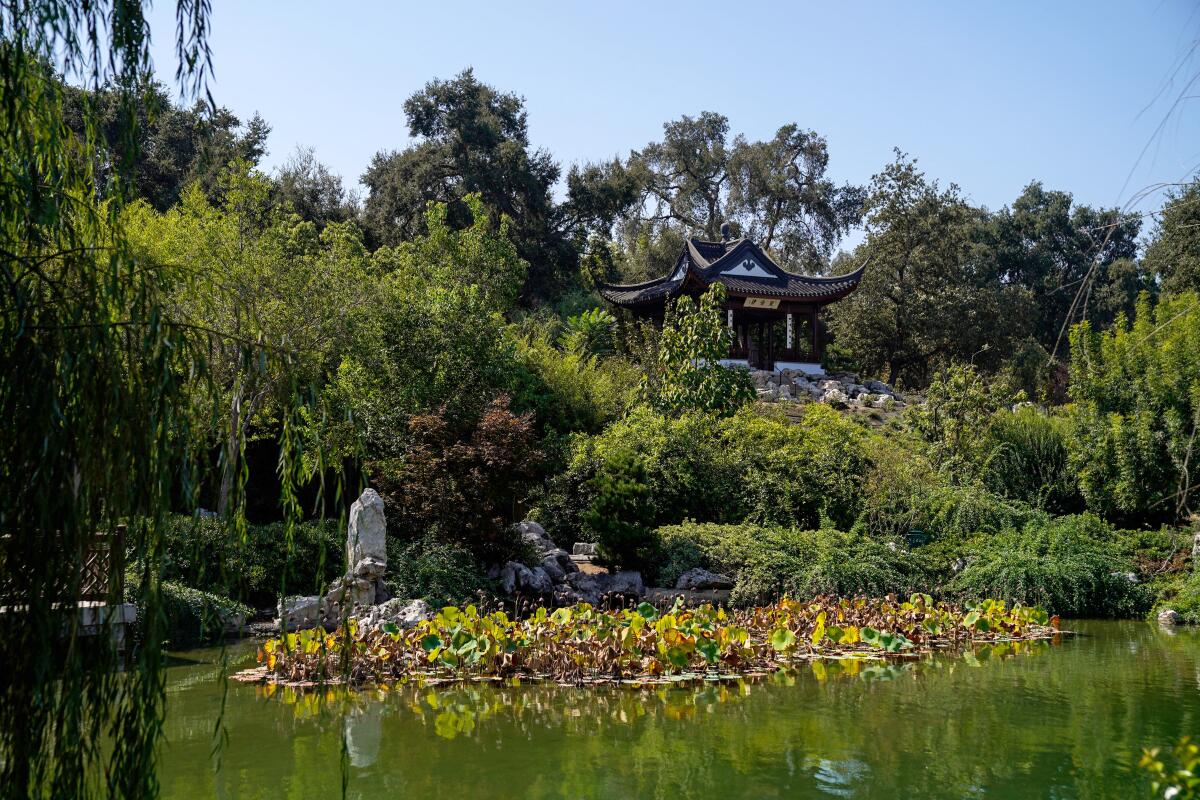
Huntington Library
Pro tip: From Oct. 2 through Jan. 3, Thomas Gainsborough’s emblematic portrait of a rich kid, nicknamed the Blue Boy, will share gallery space with a large new portrait, so far unseen but painted in response to Blue Boy by American artist Kehinde Wiley. Wiley is best known for painting Barack Obama’s official presidential portrait.
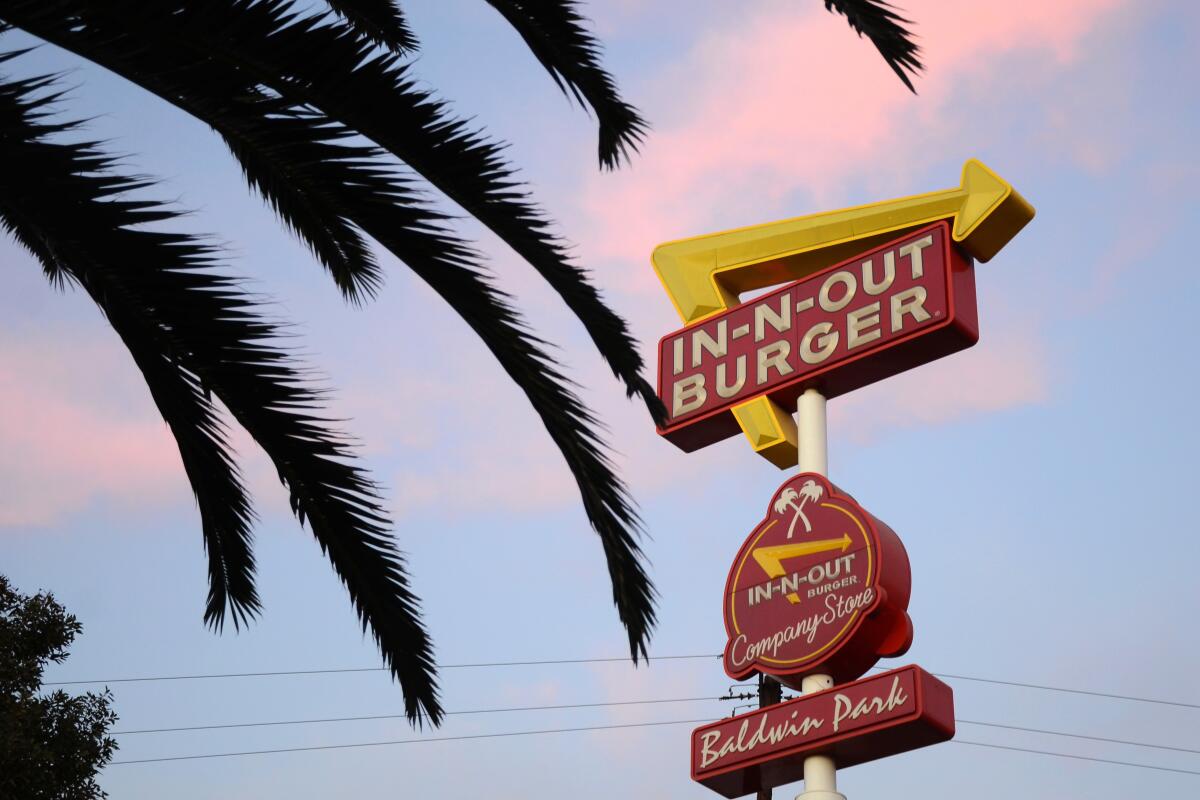
In-N-Out Burger
If you’re selfie-hungry, you’ll head to the nearby replica of the chain’s first tiny, red and white burger shack, open for photo ops 11 a.m. to 2 p.m. Thursday through Sunday at 13752 Francisquito Ave., Baldwin Park.
Harry and Esther Snyder founded the first In-N-Out Burger shack in 1948, which put them among the first to try a drive-through restaurant. To taste what the fuss is all about, order a “double-double, animal-style” — a double cheeseburger with the works, basically — which has fueled the company’s growth to more than 300 outlets.
Pro tip: About that Bible verse on the bottom of your cup: The In-N-Out chain is owned by its founders’ granddaughter, Lynsi Snyder-Ellingson, an evangelical Christian.
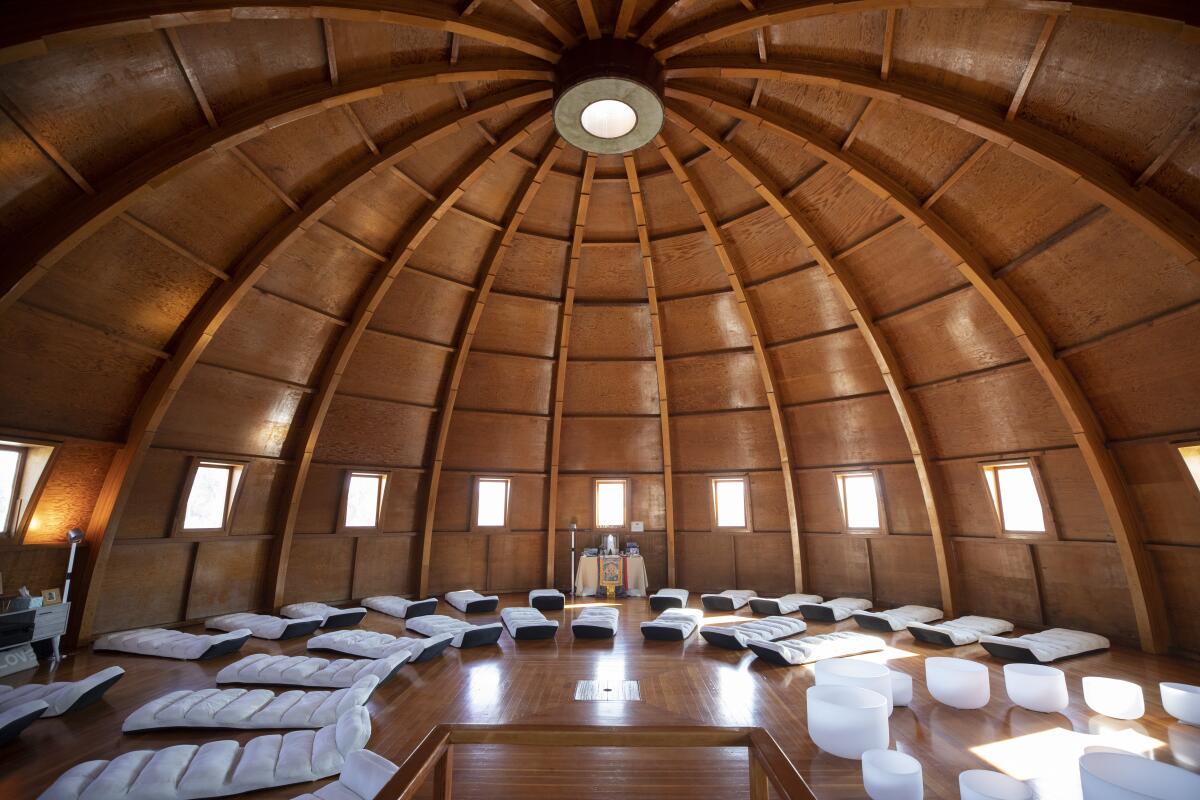
Integratron
But times and ownership change. Now family-owned, the Integratron is mostly about sound baths, offered to private and public groups by appointment only. A typical group bath starts with your host chatting for a few minutes about Van Tassel. Then he starts tapping with mallets at 20-quartz crystal “singing bowls” that can sound like church bells, elegant feedback or a planetary dial tone.
The Integratron offers group sound baths Thursdays-Sundays at $50 per person (age 14 and older). Private sound baths are $1,200 and up.
Pro tip: No soap, water or disrobing is involved, but you do have to take off your shoes and turn off your phone.
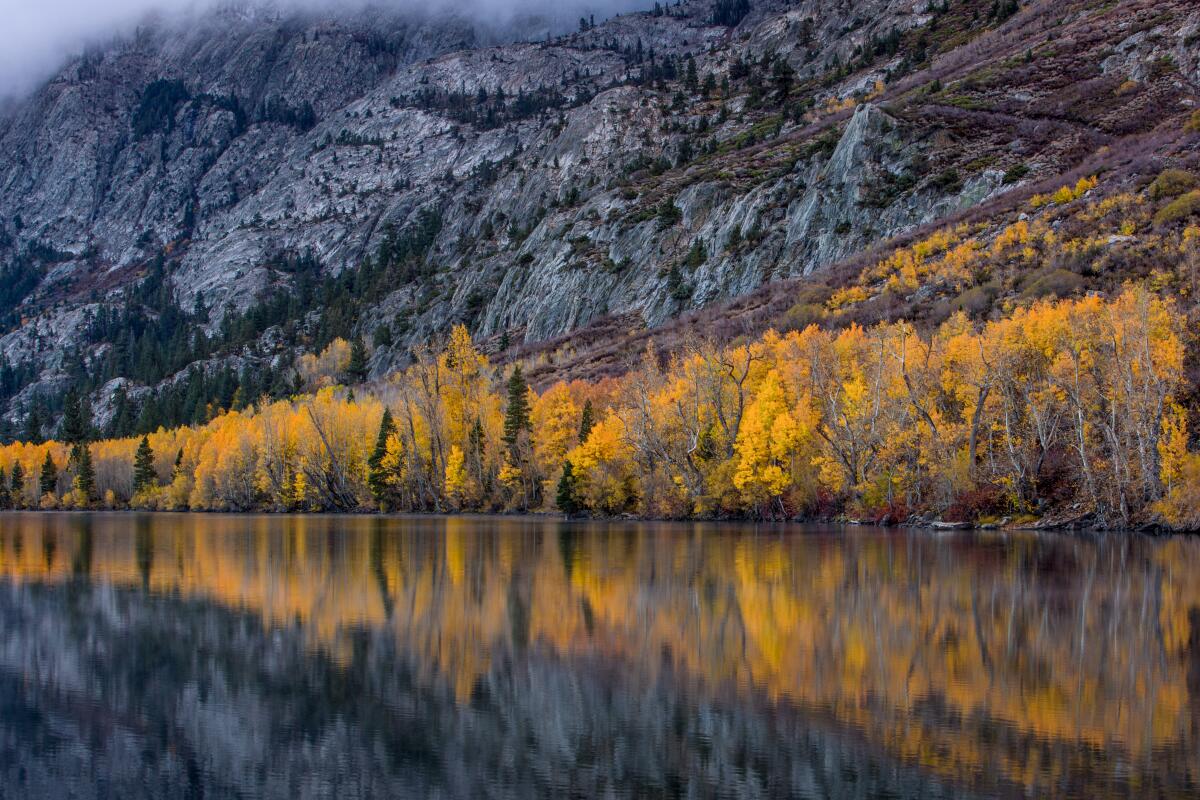
June Lake Loop, Eastern Sierra
The loop’s 16 miles take you past June Lake (about 7,650 feet), Gull Lake, Silver Lake and Grant Lake, offering cottonwoods, willows, quaking aspens and their reflections. There are rustic lodgings and restaurants, including the cabins of 105-year-old Silver Lake Resort and Double Eagle Resort.
Snow typically closes much of the June Lake Loop, usually December through April.
Pro tip: You’ll find ideas and helpful info for chasing fall colors statewide at CaliforniaFallColor.com.
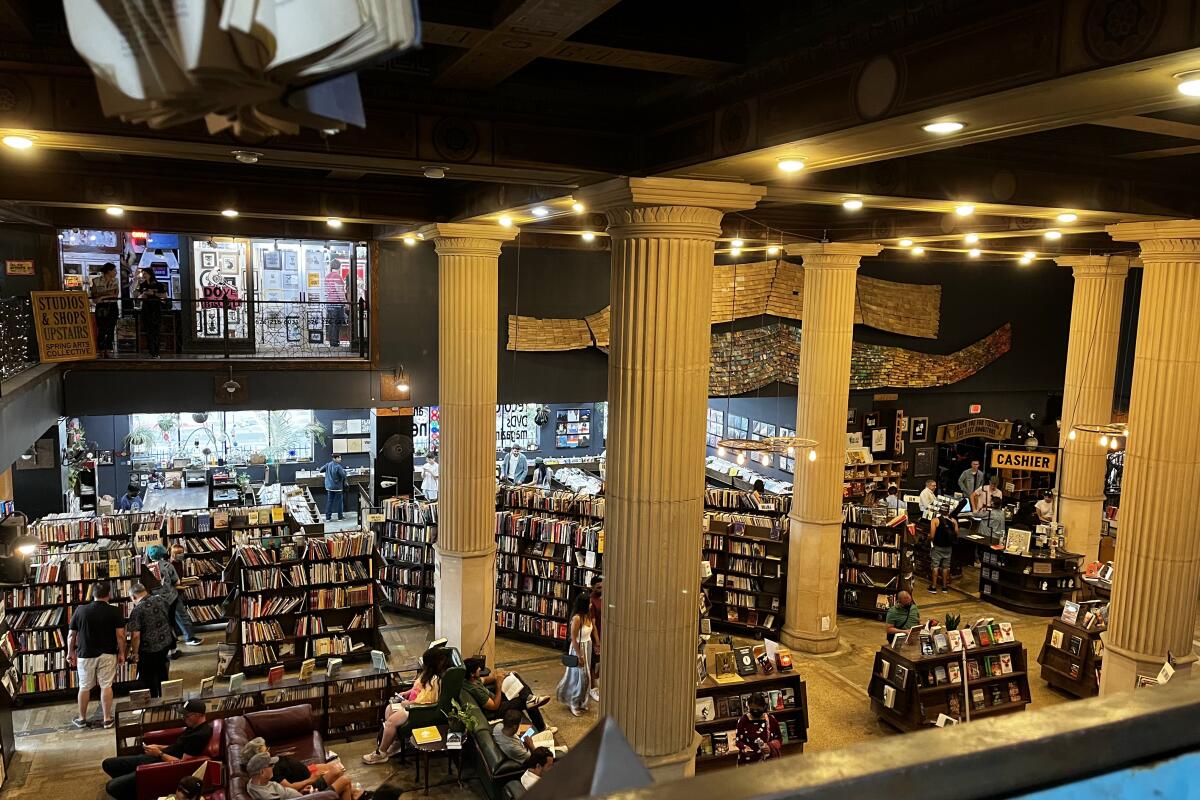
Get lost in the stacks at the Last Bookstore
You could spend an entire afternoon browsing the aisles, exploring the various book vaults, perusing the artisan galleries and trying to wrap your brain around the completely kooky and enchanting decor (e.g. the planters converted out of old record players and the famed archway made entirely of books).
You can pick out a Stephen King paperback for $10 in the horror annex upstairs, $1 vinyl from the store’s handpicked selection or a $14 logo mug while waiting in the checkout aisle.
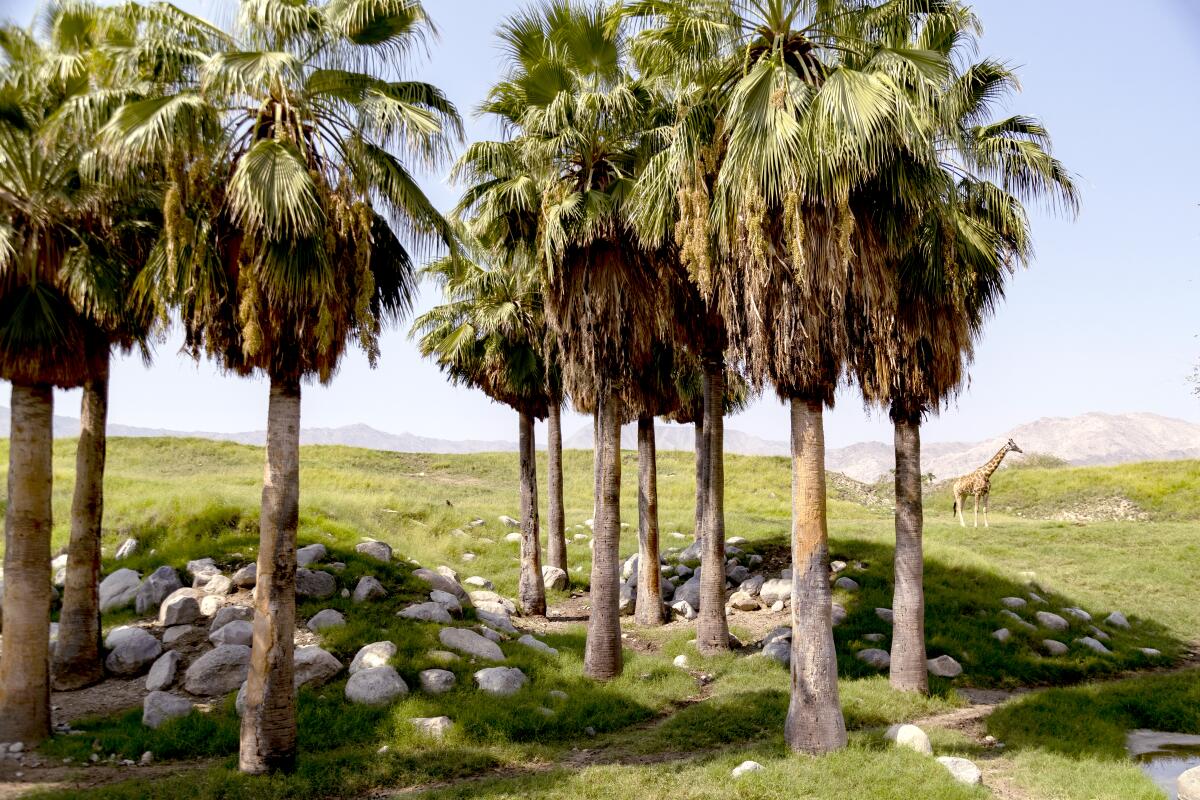
Living Desert
Pro tip: You can feed a giraffe for $8 October through May (warning: long tongue).

Madonna Inn
NOW: Grown to 110 rooms with steakhouse, coffee shop, bakery, tennis courts, swimming pool, stables and its own mountain trail, the inn remains spectacularly unhomogenized.
The Madonna family still owns it. Matriarch Phyllis Madonna (widow of Alex, in her 90s and still available to sign copies of her memoir) has always loved pink, and there’s still pink everywhere; a waterfall in the men’s room; every room different; a 50-cent postcard for every one; and three gifts shops offering everything from jelly beans to jewelry.
Roadside design expert John Margolies called this place “the grandest motel of them all.” Newlyweds and kitsch aficionados arrive every weekend and many return often, some buying signature goblets in various colors.
“I’m a collector myself. I have almost 50,” gift shop clerk Emily Mounts confessed recently.
Dazey LaRue, 36, a San Francisco designer who makes items for the shop, calls the inn “my happy place... There’s the vintage charm. There’s the kitsch behind it.” And because all the rooms are different, she said, “it’s a new experience each time. It’s like waking up in a dream.”
I didn’t love my tri-tip sandwich in the coffee shop, but the people-watching was excellent.
THE SCENE: Downtown San Luis Obispo and its popular thursday night market are handy. Within 10-35 miles you have the wineries of Paso Robles and the coastal towns of Pismo Beach and Morro Bay.
THE TAB: On weekends rooms for two typically start at about $329.

Manzanar National Historic Site
Because of pandemic precautions, hours at the visitor center’s museum and bookshop have been reduced, and rangers have stopped screening the 22-minute National Park Service documentary telling the site’s story (watchable on YouTube), but the barracks and mess hall are open daily at no charge.
Pro tip: Exhibits include a 1988 news clip of President Reagan declaring the camps “a mistake” and offering compensation to survivors. No person of Japanese ancestry living in the United States was convicted of any serious act of espionage or sabotage during the war, the NPS says.

Monterey Bay Aquarium
Pro tip: Rent a bike from Adventures by the Sea and pedal along Ocean View Boulevard toward Lovers Point and Asilomar State Beach in Pacific Grove.

Richard Nixon Presidential Library & Museum
Pro tip: Nixon and his wife, Pat, are buried here next to the modest home where Nixon was born, which is now part of the library grounds. She died in 1993; he died in 1994.

North Beach
When hunger strikes, get a big, messy sandwich at Molinari Delicatessen (established 1896) and eat it on a bench in Washington Square. Linger over coffee at Caffe Trieste (since 1956) or dig into prizeworthy pies at Tony’s Pizza Napoletana on Stockton Street.
Pro tip: Columbus Avenue is North Beach’s main drag, but many of the best discoveries await in the alleys and side streets, including Green Street, where Sodini’s, Sotto Mare and other eateries have added outdoor dining.
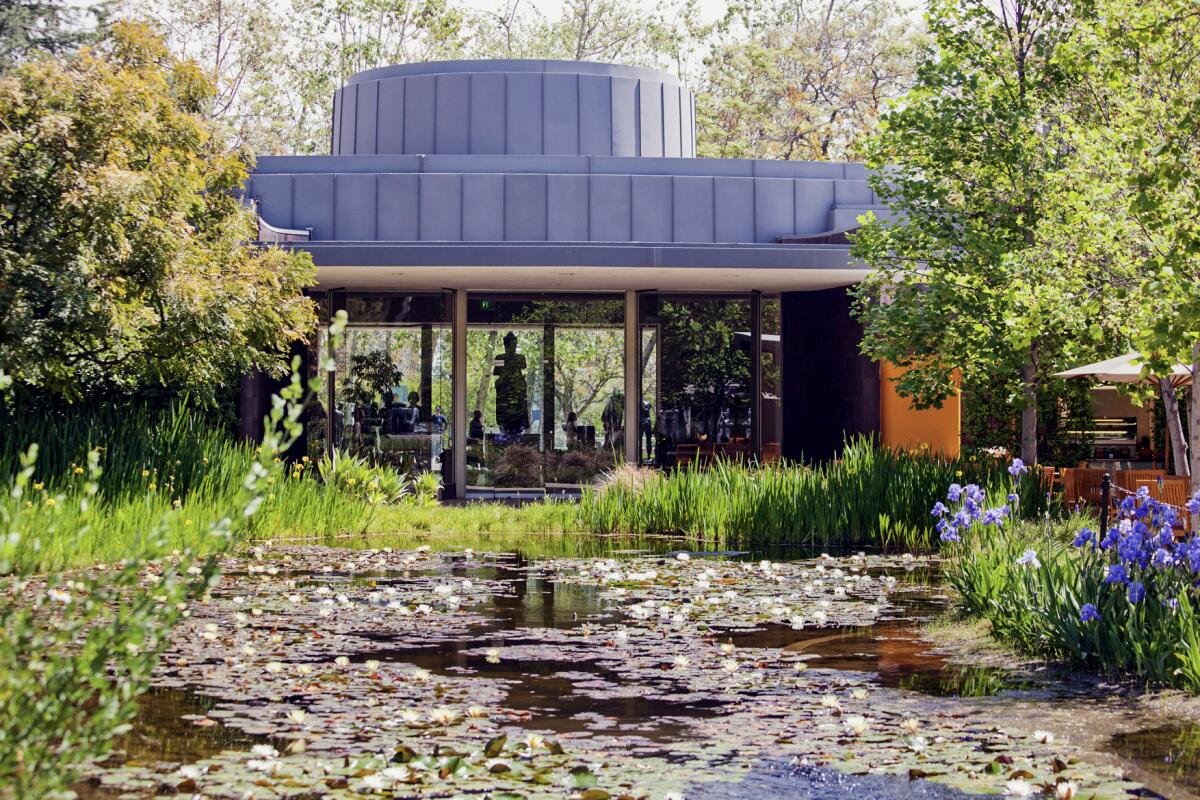
Norton Simon Museum
Pro tip: Even if you’ve never set foot in Pasadena, odds are good that you’ve seen this museum’s brown-tiled exterior. That’s because it stands at the corner of Colorado and Orange Grove boulevards, the prime turn (and TV camera location) along the route of the Rose Parade.

Olvera Street
If you’re hungry or need a souvenir, start with Olvera itself, which is a pedestrian alley of casual restaurants and curio vendors. The pandemic has closed at least one eatery and slowed demand for hats, masks, toys, plates, leather and little guitars. But restaurants El Paseo, Cielito Lindo and Luz del Dia are hanging in there, as is Olverita’s Village, which sells clothes, crafts, art and cookware.
For a more skeptical look at colonial history, climb the stairs (halfway down the west side of the street; limited hours) to see “América Tropical,” a David Siqueiros mural whitewashed by authorities, then later restored. (Yes, that’s a crucified Indigenous laborer in the center of the composition.)
There’s more history across Main Street in LA Plaza de Cultura y Artes, which includes a two-story history and art museum. (Of Los Angeles’ 44 founders, the museum display notes, 26 had at least some African roots.)
Pro tip: Olvera Street owes its part-real, part-fake character to civic activist Christine Sterling, who may have never been to Mexico but led the campaign to gussy up the area in the 1920s and ‘30s. One of her key boosters was Harry Chandler, then publisher of The Times.
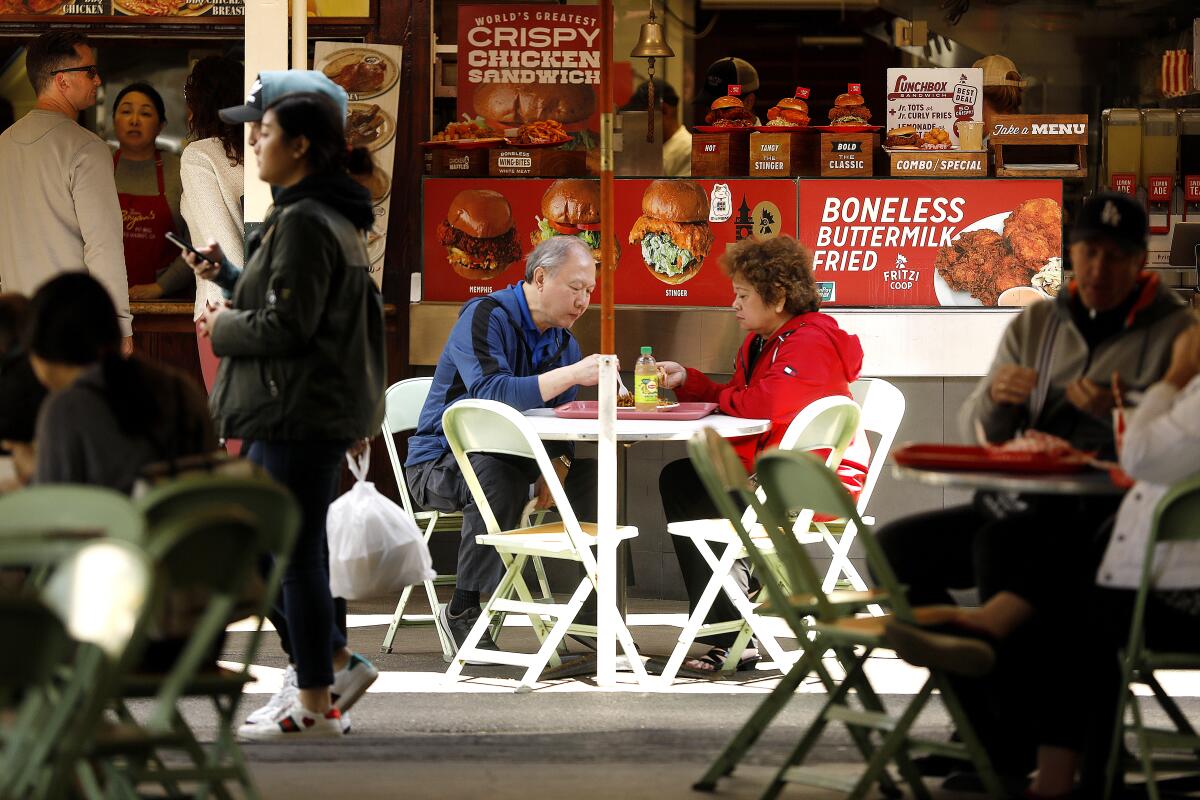
Original Farmers Market
Hungry? For all things French, try Monsieur Marcel Gourmet Market. For tacos, Trejo’s. And for pie, Du-par’s (since 1938) is open around the clock. If you’re traveling with teens, they’ll probably head next door to the Grove, an upscale mall that opened in 2002 with about a dozen restaurants, 14 movie screens, a dancing fountain and occasional live music.
Pro tip: For more old/new contrasts, wander among the teen-seeking streetwear shops on Fairfax Avenue between Beverly Boulevard and Melrose Avenue — the Hundreds and Solestage, for instance — and you’ll find they’re neighbored by older kosher markets and restaurants, mostly notably Canter’s, which is open all hours and a few years older than the Farmers Market.
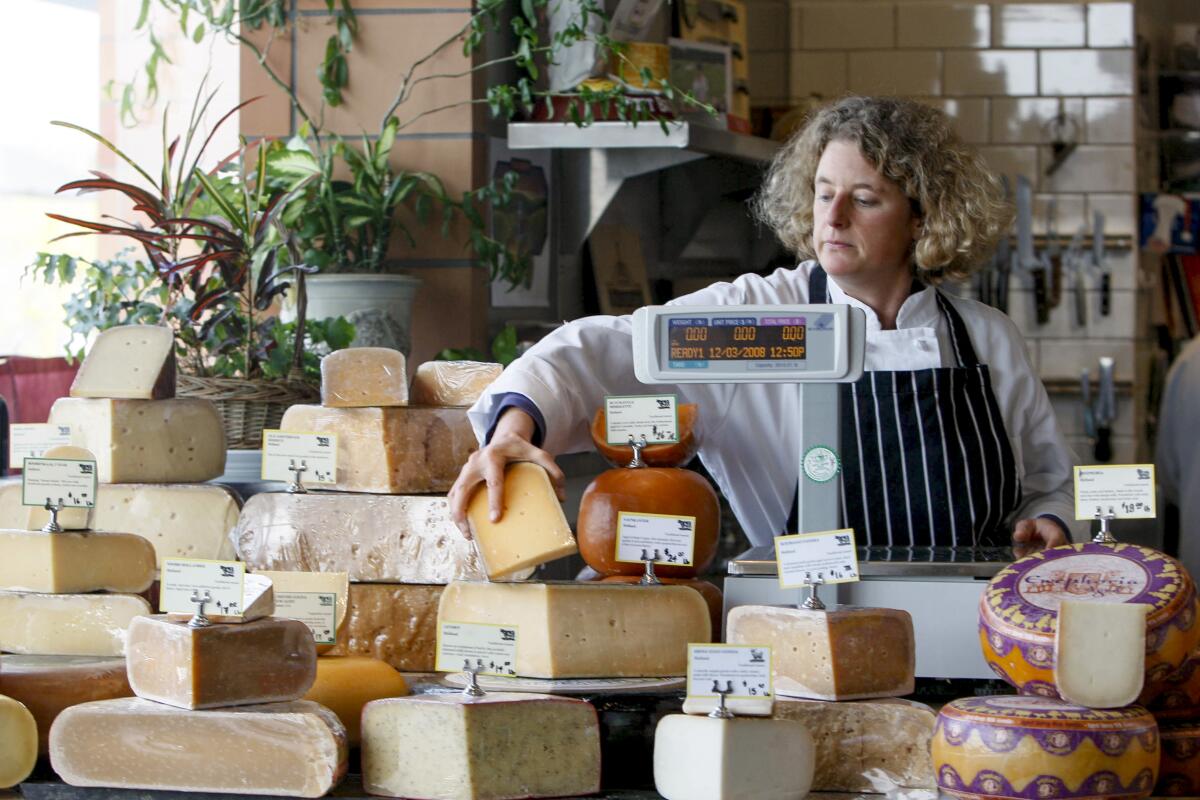
Oxbow Public Market
Pro tip: The market is about two blocks southeast of the start of the Napa Valley Wine Train and two blocks southwest of the CIA at Copia, which is not a spy shop but a dining-and-education venture of the Culinary Institute of America.
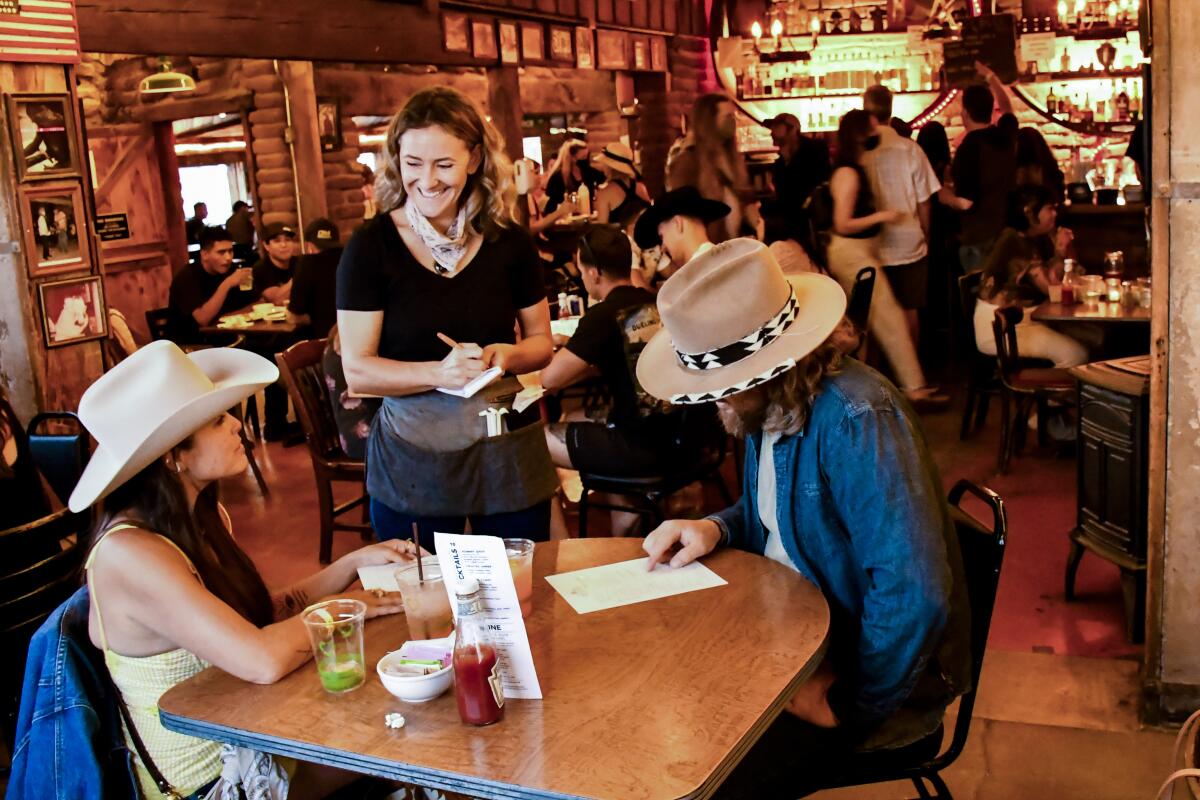
Pappy & Harriet's
Steaks are cooked on an outdoor grill, beer is served in Mason jars and all meal service (hearty portions) is first-come, first served — so expect lines on weekends. For now, most live music happens on the venue’s outdoor stage (and guests must show proof of either a full COVID-19 vaccination or negative COVID-19 PCR test result). Lucinda Williams and Colter Wall are expected in October. Pappy’s is closed Tuesdays and Wednesdays.
Pro tip: You’ll want time to nose around the rest of Pioneertown, all of which was built as a movie set. It’s edging its way back toward becoming a true Western town with a motel, saloon and six-lane bowling alley reopening Oct. 26.
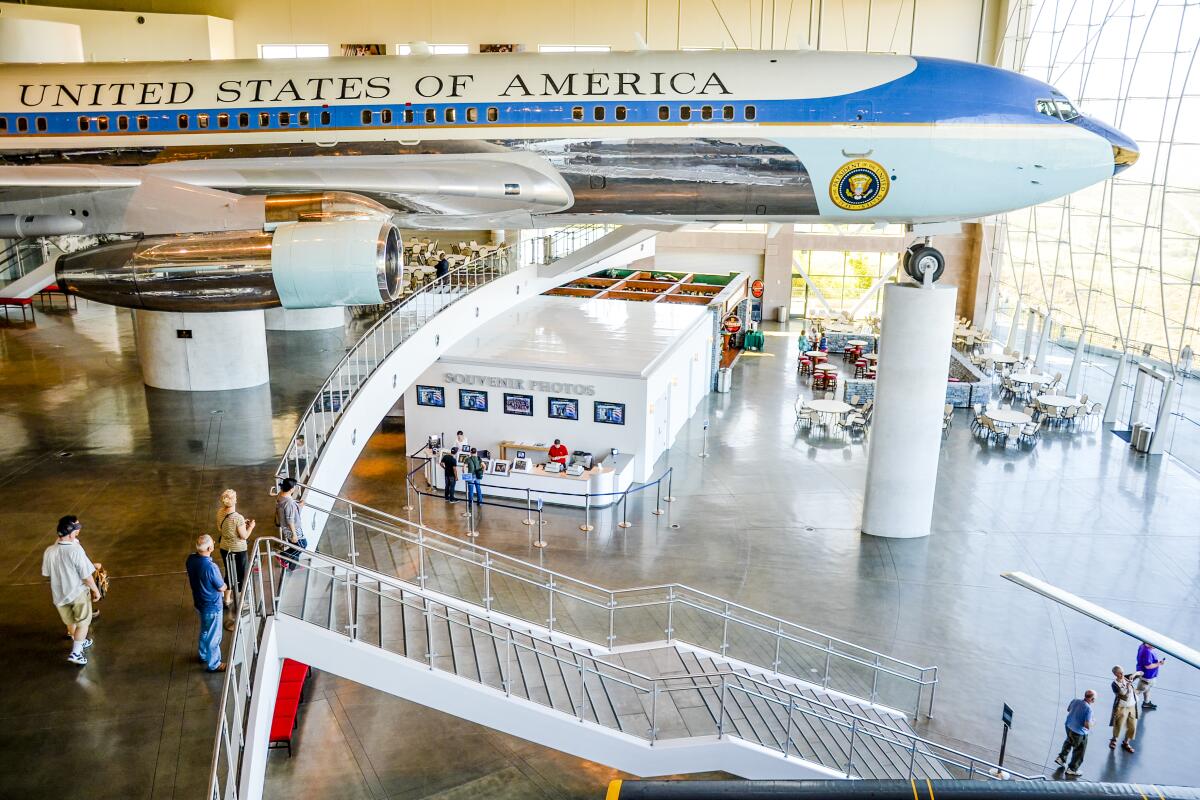
Ronald Reagan Presidential Library & Museum
Pro tip: Before you admire the museum’s big chunk of the Berlin Wall, read Reagan’s “Mr. Gorbachev, Tear Down This Wall” speech, delivered in Berlin on June 12, 1987.
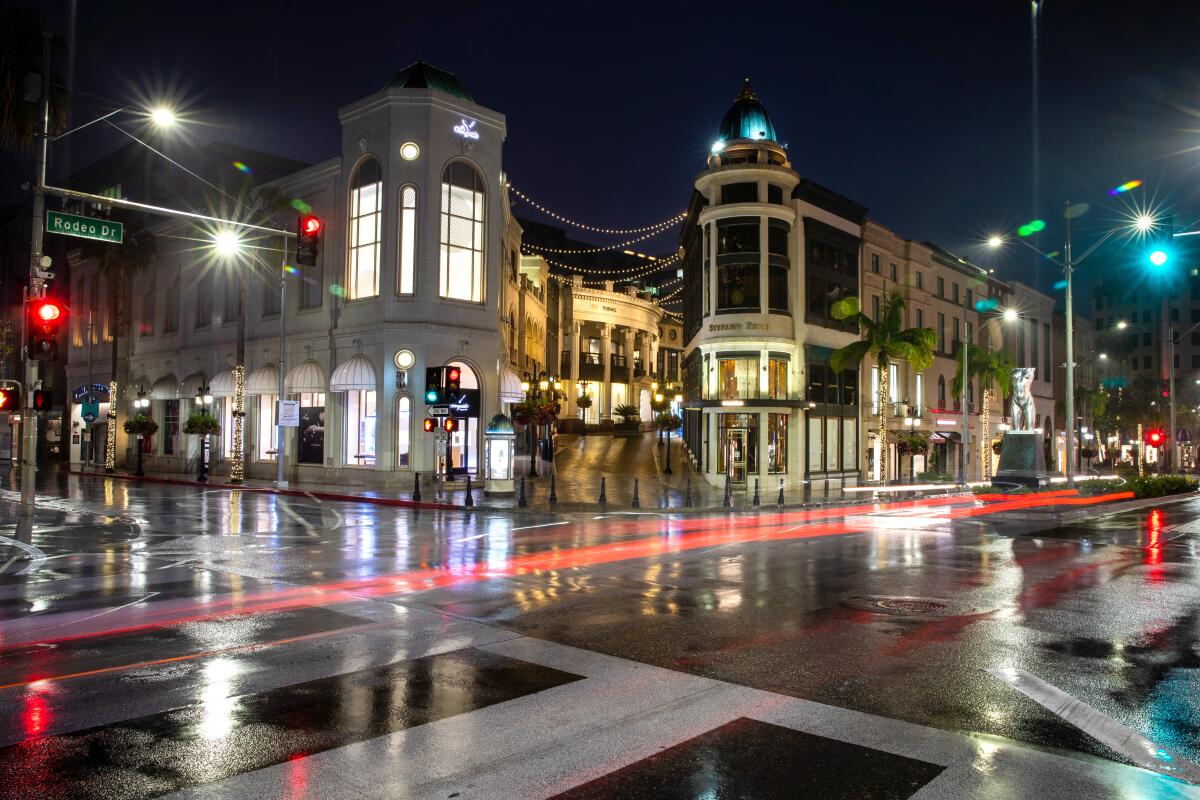
Rodeo Drive
Pro tip: Parking can be as tough as making that first $5 million. Street spots are metered at $2 per hour, with multiple structures nearby.
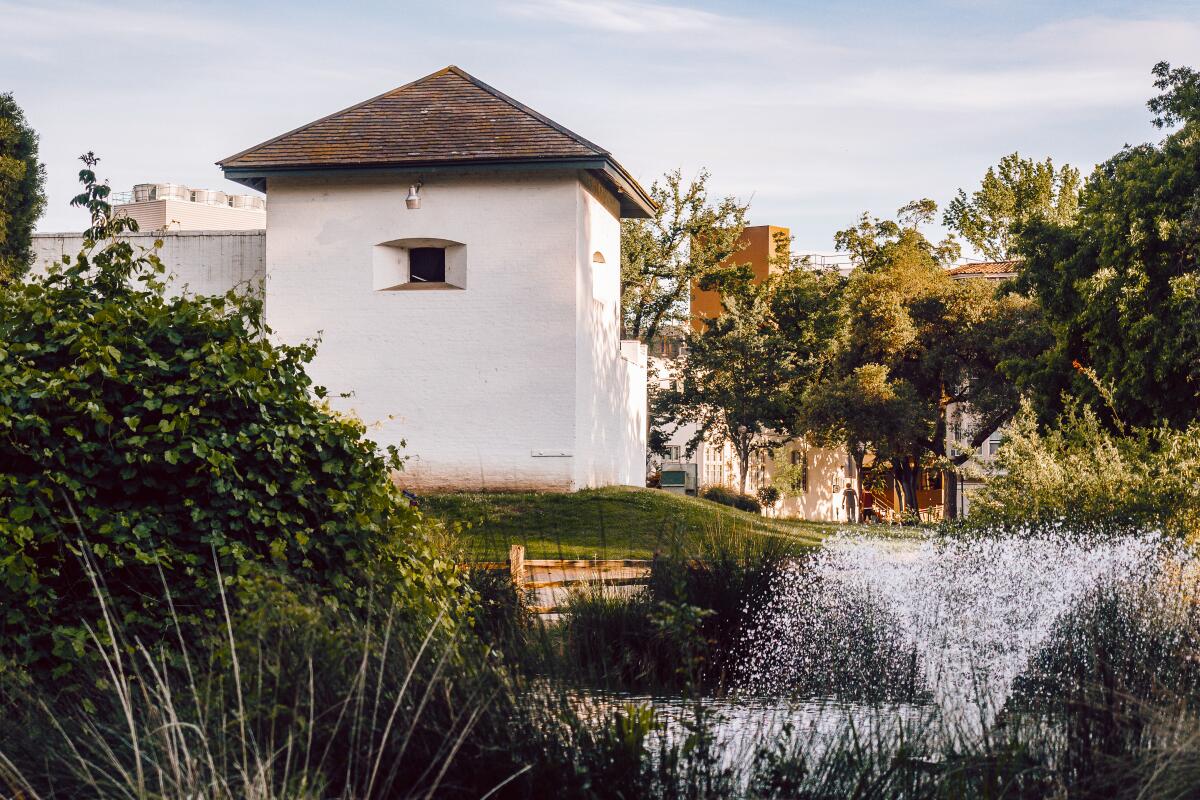
Sutter's Fort
John Sutter’s Fort, built by a Swiss immigrant when Mexico owned California, is now a state historic park teeming with costumed docents and student groups. Rangers aim to portray the fort as it was in 1846 with parked covered wagons and a blacksmith on the job. It was a Sutter employee, James Marshall, who found gold in early 1848 just as the U.S. was completing its campaign to grab California and neighboring territories from Mexico. In the ensuing gold rush, California lurched into a new era and Sutter went bankrupt.
Pro tip: There’s more of the 19th century close at hand. The eight-block Old Sacramento State Historic Park is a riverside district full of wooden sidewalks, touristy shops and 1850s architecture, with an adjacent California State Railroad Museum (closed for now) and a riverboat hotel, the Delta King, docked next door.
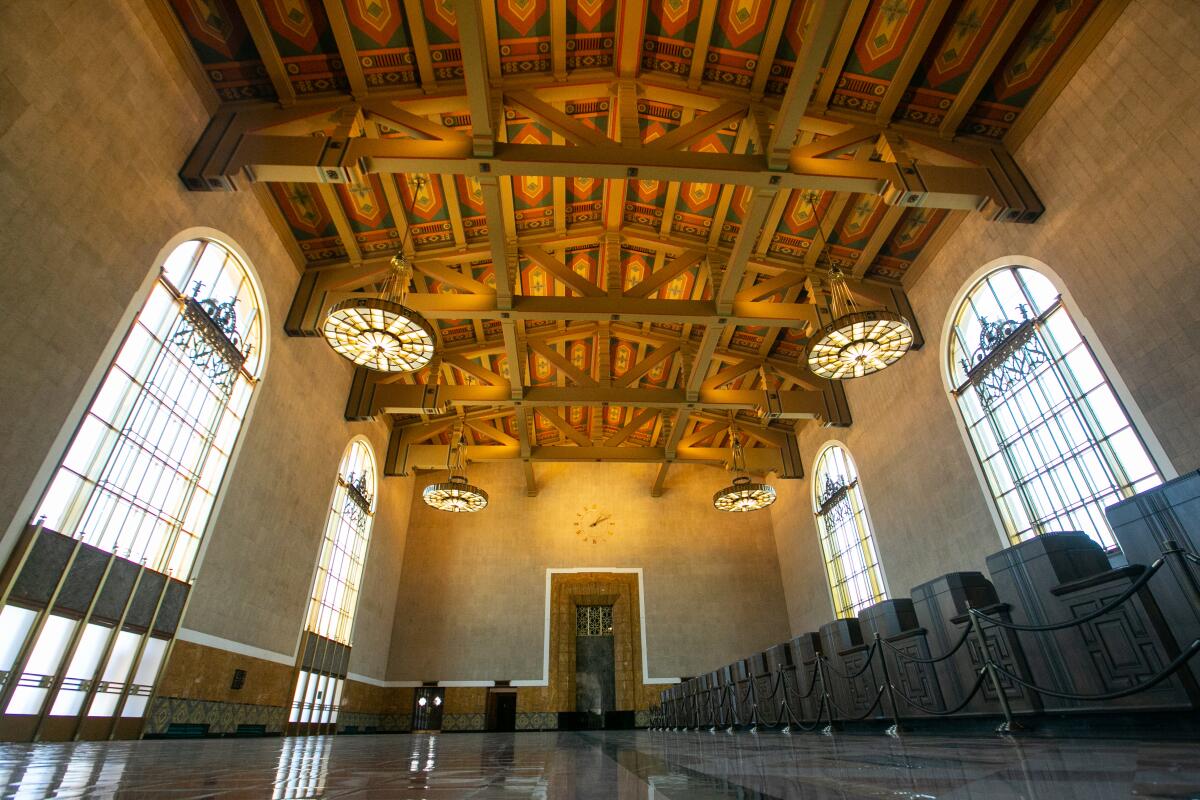
Union Station
You could catch a train, get a drink at Traxx or a taco to go at Cilantro, or just gawk at the high ceiling, the grand arches and the stately chairs in the waiting area. Note that many wooden features are concrete in disguise. The L.A. County Metropolitan Transportation Authority, which bought the station in 2011, has added a lot of energy (including the 2021 Oscars ceremony) and a full calendar of artsy “happenings.”
Pro tip: Root for the reopening of the complex’s old Harvey House restaurant site, where the enormous Imperial Western Beer Co. and the Streamliner cocktail bar have been closed since July 2020.
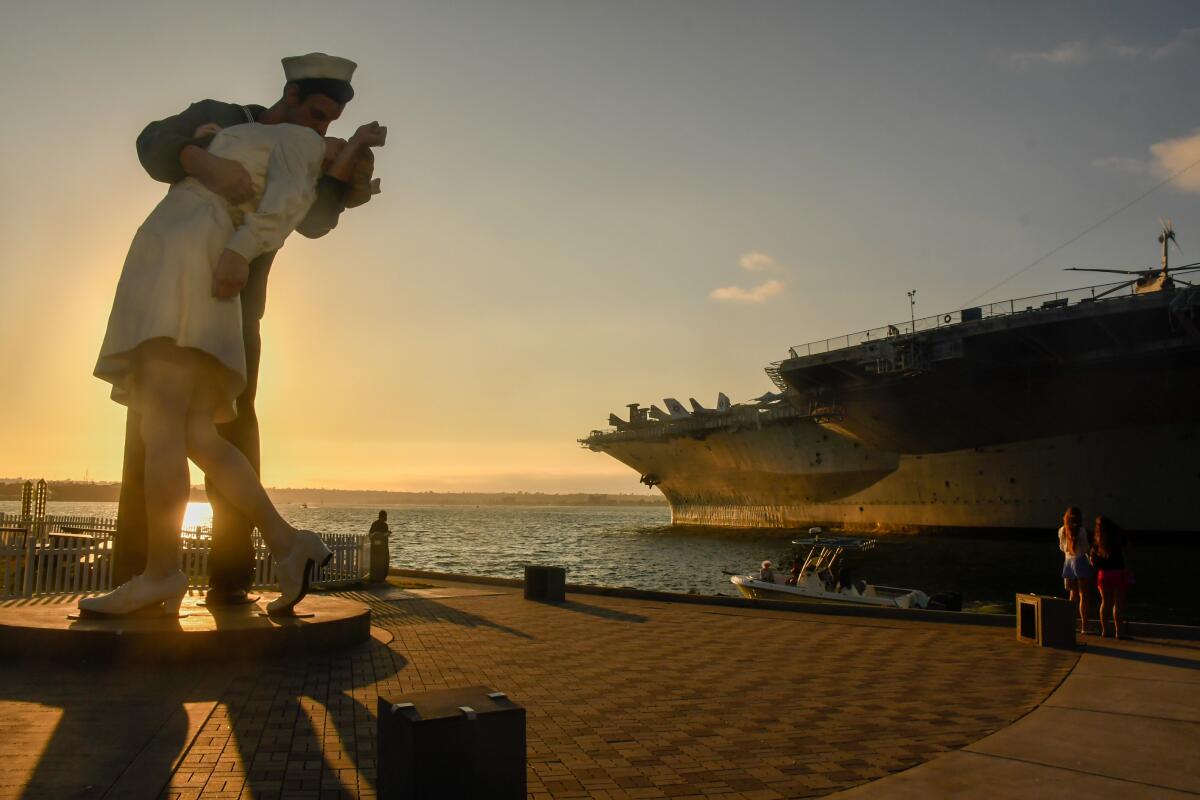
USS Midway Museum
Pro tip: Just a mile south of the Midway, San Diego’s port and symphony officials in August inaugurated the Rady Shell at Jacobs Park, an outdoor music venue that’s already hosting classical, pop and jazz performances. The sloped grass seating area is said to accommodate 10,000 people.
Sign up for The Wild
We’ll help you find the best places to hike, bike and run, as well as the perfect silent spots for meditation and yoga.
You may occasionally receive promotional content from the Los Angeles Times.

